OPAC
Pfad in Koha: Mehr > Administration > Systemparameter > OPAC
Erweiterte Suche
OpacAdvancedSearchTypes
Fragt: Anzeige von Reitern in der erweiterten OPAC-Suche zur Einschränkung der Suche auf die Felder ___.
Standardwert: Exemplartyp
Beschreibung:
Auf der Seite für die erweiterte Suche im OPAC können Sie Filter für einen oder alle der folgenden Punkte zulassen: Exemplartypen (itemtypes), Sammlungscodes (ccode) und Standort (loc).

Trennen Sie mehrere Werte mit einer Pipe (|). Geben Sie z. B. itemtypes|loc ein, um die Suche auf Exemplartyp und Standort zu beschränken.
Die Reihenfolge, in der die Optionen in dem Systemparameter eingegeben werden, entspricht der Reihenfolge, in der die Reiter erscheinen. Die erste Option in dem Systemparameter ist der ausgewählte Reiter.
Falls leer gelassen, wird „itemtypes“ verwendet.
Werte innerhalb des Suchtyps werden ODER-verknüpft, während jeder andere Suchtyp in den Abfragegrenzen UND-verknüpft wird.
Siehe auch:
OpacAdvSearchMoreOptions
Fragt: Zeige die folgenden Suchoptionen, wenn ‚[Mehr Optionen]‘ gewählt wird: ___
Voreinstellung: Alle ausgewählt
Werte:
[Alle auswählen]
Exemplartypen
Sprache
Standort und Verfügbarkeit
Erscheinungsdatum
Sortierung
Unterkategorien
Beschreibung:
Diese Einstellungen legen fest, welche Suchfelder bei der Auswahl von „Weitere Optionen“ in der Erweiterten Suche angezeigt werden.
OpacAdvSearchOptions
Voreinstellung: Exemplartypen, Sprache, Standort und Verfügbarkeit, Erscheinungsjahr, Sortierung
Fragen: Zeige die Suchoptionen ___
Werte:
[Alle auswählen]
Exemplartypen
Sprache
Standort und Verfügbarkeit
Erscheinungsdatum
Sortierung
Unterkategorien
Beschreibung:
Diese Einstellungen legen fest, welche Suchfelder bei der Auswahl von „Weniger Optionen“ in der Erweiterten Suche angezeigt werden.
Aussehen
Diese Einstellungen kontrollieren, wie Dinge im OPAC angezeigt werden.
BiblioDefaultView
Voreinstellung: im einfachen Format
Fragt: Voreingestellt, zeige bibliographische Datensätze ___
Werte:
wie im ISBD-Template spezifiziert.
Für weitere Informationen siehe den Parameter ISBD
in einfacher Form.
in ihrem MARC-Format.
Beschreibung:
Dieser Systemparameter bestimmt die Ebene der bibliografischen Details, die der/die Benutzer*in auf der OPAC-Detailseite sehen kann. Die einfache Form zeigt die grafische Oberfläche an; das MARC-Format zeigt die MARC21-Katalogisierungsansicht; ISBD zeigt die ISBD-Ansicht (International Standard Bibliographic Description, AACR2).
COinSinOPACResults
Voreingestellt: Einschließen
Fragt: ___ COinS / OpenURL / Z39.88 in der OPAC-Trefferliste.
Werte:
Nicht einschließen
Wenn Sie sich dafür entscheiden, COinS nicht in die Suchergebnisse einzubeziehen, wird es dennoch in die einzelnen bibliografischen Datensätze geladen.
Einschließen
Wenn Sie diese Funktion aktivieren, verlangsamt sich die Antwortzeit der OPAC-Suche.
Beschreibung:
COinS steht für ContextObjects in Spans. COinS ist eine Methode zur Einbettung bibliografischer Metadaten in den HTML-Code von Webseiten. Dies ermöglicht es bibliografischer Software, maschinenlesbare bibliografische Exemplare zu veröffentlichen, und Client-Referenzverwaltungssoftware (wie Zotero), bibliografische Metadaten abzurufen. Die Metadaten können auch an einen OpenURL-Resolver gesendet werden. Dies ermöglicht z. B. die Suche nach einem Exemplar eines Buches in der eigenen Bibliothek.
DisplayOPACiconsXSLT
Fragt: ___ das Format, die Zielgruppe und die Materialtypicons mit den zugehörigen Beschreibungen in den MARC21 XSLT-Sichten für Trefferliste und Detailansicht im OPAC.
Voreingestellt: Nicht zeigen
Werte:
Nicht zeigen
Zeige
Beschreibung:
Dieser Systemparameter wird verwendet, um die Informationen zu Format, Zielgruppe und Materialtyp aus den Kontrollfeldern des bibliografischen MARC 21-Datensatzes ein- oder auszublenden.

Bemerkung
Weitere Informationen zu diesen Symbolen finden Sie unter Symbole für XSLT-Materialtypen.
Warnung
Dies wird nur in XSLT-Anzeigen verwendet, daher muss OPACXSLTResultsDisplay und/oder OPACXSLTDetailsDisplay so eingestellt sein, dass ein XSLT-Stylesheet verwendet wird, damit dies angezeigt wird (Standard oder benutzerdefiniert)
Siehe auch:
hidelostitems
Voreingestellt: Nicht zeigen
Fragt: ___ verlorene Exemplare in der Suche und den Detailansichten.
Beschreibung:
Exemplare, die von der Bibliothek als „verloren“ gekennzeichnet wurden, können im OPAC angezeigt oder verborgen werden. Wenn der Wert auf „Zeige keine“ gesetzt wird, erscheint ein verlorenes Exemplar nicht im OPAC. Wird der Wert auf „Zeige“ gesetzt, wird das verlorene Exemplar im OPAC mit dem Status „Verloren“ angezeigt
Werte:
Nicht zeigen
Zeige

HighlightOwnItemsOnOPAC und HighlightOwnItemsOnOPACWhich
HighlightOwnItemsOnOPAC Standard: Nicht hervorheben
HighlightOwnItemsOnOPACWhich Standard: Heimatbibliothek des Benutzers
Fragt: ___ Treffer aus der ___, indem die Treffer an den Anfang gestellt, die Schrift vergrößert oder die Zeilen anderweitig optisch hervorgehoben werden. (Betrifft nur die normale Trefferliste ohne XSLT).
HighlightOwnItemsOnOPAC Werte:
Betone nicht
Betone
HighlightOwnItemsOnOPACWhich Werte:
OPAC-Bibliothek anhand der URL
Die Bibliothek wird anhand der Apache-Umgebungsvariable BRANCHCODE ausgewählt. Dieser kann zum Beispiel im Bereich OPAC in der koha-httpd.conf hinzugefügt werden: SetEnv BRANCHCODE „CPL“
Heimatbibliothek des Benutzers
Es werden diejenigen Exemplare hervorgehoben, die zur Bibliothek des/der Benutzer*in gehören. Wenn kein*e Benutzer*in im OPAC eingeloggt ist, werden keine Exemplare hervorgehoben.
Wichtig
Dieser Systemparameter wirkt sich nur auf Standorte aus, die kein XSLT-Stylesheet verwenden. XSLT-Stylesheets werden über die Systemparameter OPACXSLTResultsDisplay und OPACXSLTDetailsDisplay definiert.
LibraryName
Fragt: Zeige ___ als Bibliotheksnamen im OPAC.
Hinweis
Dieser Wert erscheint in der Titelleiste des Browsers
Hinweis
Um eigene Inhalt im Bereich über dem Sucheingabefeld in Ihrem OPAC anzuzeigen, können Sie mit dem Nachrichten-Werkzeug ein Nachrichtenelement für den „opacheader“ erstellen

OpacAdditionalStylesheet
Asks: Include the additional CSS stylesheet ___ to override specific settings from the default stylesheet.
Beschreibung:
Der Systemparameter kann nach Stylesheets im Template-Verzeichnis für Ihre OPAC-Sprache suchen, z.B.: /koha-tmpl/opac-tmpl/prog/de/css. Wenn Sie eine benutzerdefinierte Datei, opac-mystyles.css, in dieses Verzeichnis hochladen, können Sie diese durch die Eingabe von opac-mystyles.css in Ihrem Systemparameter opaccolorstylesheet angeben. Dadurch wird Ihr benutzerdefiniertes Stylesheet als verlinktes Stylesheet neben den Standard-CSS-Dateien des OPAC hinzugefügt. Diese Methode ist vorzuziehen, da verlinkte Stylesheets vom Browser des Benutzers zwischengespeichert werden, was bedeutet, dass der Browser des Benutzers bei wiederholten Besuchen Ihrer Website das Stylesheet nicht erneut herunterladen muss, sondern die Kopie im Cache des Browsers verwendet.
If you would rather, you can upload your CSS to another server and enter the full URL pointing to its location. Remember to begin the URL with http://
Hinweis
Lassen Sie dieses Feld leer um es zu deaktivieren
Hinweis
Diese Datei fügt ein verlinktes CSS hinzu und ersetzt nicht das vorhandene Standard-CSS.
OpacAddMastheadLibraryPulldown
Fragt: ___ Auswahlliste mit Bibliotheken neben der einfachen Suche in der Kopfzeile des OPAC.
Standard: Füge nicht hinzu
Werte:
Hinzufügen
Füge nicht hinzu
Beschreibung:
Wenn dieser Systemparameter auf „Hinzufügen“ gesetzt ist, wird ein Dropdown-Menü mit Bibliotheken und Bibliotheksgruppen in der einfachen Suchleiste im OPAC hinzugefügt.

Damit wird nach Datensätzen gesucht, die Exemplare enthalten, deren Heimatbibliothek die ausgewählte Bibliothek ist. Es ist dasselbe wie die Einschränkung auf eine Bibliothek in der erweiterten Suche.
OPACBaseURL
Fragt: Der OPAC befindet sich unter ___
Beschreibung:
Dieser Systemparameter sucht nach der URL Ihres öffentlichen Katalogs (OPAC) mit dem vorangestellten http:// (geben Sie http://www.mycatalog.com statt www.mycatalog.com ein). Sobald sie ausgefüllt ist, verwendet Koha sie, um permanente Links in Ihren RSS-Feeds, für Ihre Schaltflächen zum Teilen in sozialen Netzwerken und in Ihrer Dienstoberfläche bei der Erstellung von Links zu bibliografischen Datensätzen im OPAC zu erzeugen.
Wichtig
Fügen Sie keinen abschließenden Schrägstrich in die URL ein, da dies Links brechten würde, die mit dieser URL erstellt wurden. (Beispiel: http://www.google.com nicht http://www.google.com/)
Wichtig
Hier muss die URL Ihres öffentlichen Katalogs eingetragen werden, damit RSS-, unAPI- und Such-Plugins funktionieren.
Wichtig
Hier muss die URL Ihres öffentlichen Katalogs angegeben werden, damit die „OPAC View“-Links von bibliografischen Datensätzen in der Dienstoberfläche angezeigt werden:

OPACDisplay856uAsImage
Fragt: Zeigt die URI im Feld 856u als Bild an: ___
Voreingestellt: Weder Details noch Ergebnisseite
Werte:
Sowohl Ergebnis- als auch Detailseiten
Bemerkung
Sowohl OPACXSLTDetailsDisplay als auch OPACXSLTResultsDisplay müssen Werte haben, damit dieser Systemparameter funktioniert.
Warnung
Dies ist nur in MARC21 implementiert.
nur Detailseite
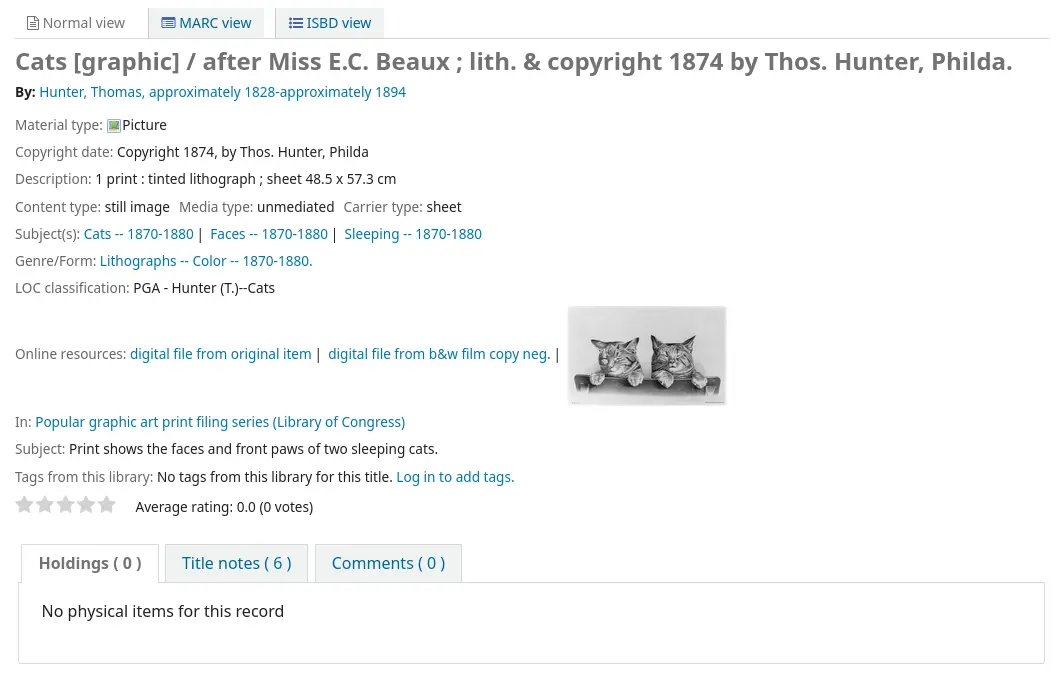
Bemerkung
OPACXSLTDetailsDisplay muss einen Wert enthalten, damit dieser Parameter funktioniert.
Warnung
Dies ist nur in MARC21 implementiert.
Weder Details noch Ergebnisseite
Nur Ergebnisseite

Bemerkung
OPACXSLTResultsDisplay muss einen Wert enthalten, damit dieser Parameter funktioniert.
Warnung
Dies ist nur in MARC21 implementiert.
Beschreibung:
Zusätzlich zur Einstellung dieser Option muss die entsprechende XSLT-Option aktiviert sein.
Außerdem muss das entsprechende 856q-Feld eine gültige MIME-Bilderweiterung (z. B. „jpg“) oder einen gültigen MIME-Bildtyp (d. h. beginnend mit „image/“) oder den generischen Indikator „img“ enthalten, der in das Feld eingegeben wird.

Bemerkung
Gängige MIME-Bildtypen
Dateityp
Bild-MIME-Typ
Dateierweiterung
Bitmap
image/bmp
bmp
Graphic interchange format (gif)
image/gif
gif
JPEG-Bild
image/jpeg
jpg
JPEG-Bild
image/jpeg
jpeg
Skalierbare Vektorgrafik
image/svg+xml
svg
TIF-Bild
image/tiff
tiff
TIF-Bild
image/tiff
tif
Wenn alle Voraussetzungen erfüllt sind, wird anstelle des Standard-Linktextes eine Bilddatei angezeigt. Wenn Sie auf das Bild klicken, wird es auf dieselbe Weise geöffnet wie der Linktext. Wenn Sie auf das Bild klicken, sollte es sich in voller Größe öffnen, im aktuellen Fenster oder in einem neuen Fenster, je nach dem Wert im Systemparameter OPACURLOpenInNewWindow.
Siehe auch:
OpacExportOptions
Voreingestellt:
Fragt: Wählen Sie die Exportoptionen aus, die im OPAC angeboten werden sollen: ___
Beschreibung:
Im OPAC gibt es rechts von jedem bibliographischen Datensatz ein Menü, mit dem der Datensatz in verschiedenen Formaten gespeichert werden kann. Mit diesem Patch können Sie festlegen, welche Optionen sich in dem Pulldown-Menü befinden. Verfügbare Optionen sind: BIBTEX (bibtex), Dublin Core (dc), MARCXML (marcxml), MARC-8 kodiertes MARC (marc8), Unicode/UTF-8 kodiertes MARC (utf8), Unicode/UTF-8 kodiertes MARC ohne lokale Verwendung -9xx, x9x, xx9- Felder und Unterfelder (marcstd), MODS (mods) und RIS (ris).
OPACFallback
Standard: bootstrap
Fragt: Verwende das ___Theme als Fallback für das Theme im OPAC.
Beschreibung:
Der Zweck dieser Voreinstellung ist es, eine Möglichkeit zu bieten, auf welches Theme zurückzugreifen ist, wenn Sie ein partielles Theme verwenden.
OpacFavicon
Fragt: Verwende das Bild unter ___ für das Favicon des OPAC.
Beschreibung:
Das Favicon ist das kleine Symbol, das in den meisten Browsern neben dem Seitentitel im Reiter erscheint. Der Standardwert für dieses Feld (falls leer gelassen) ist das kleine „K“ des Koha-Logos auf weißem Hintergrund.

Geben Sie eine vollständige URL (beginnend mit http:// oder https://) zu Ihrem Bild an
Bemerkung
Wandeln Sie Ihr Logo in ein Favicon um mit dem Favicon Generator.
OpacHighlightedWords und NotHighlightedWords
OpacHighlightedWords Standard: Nicht hervorheben
NotHighlightedWords Standard: and|or|not
Asks: ___ words the patron searched for in their search results and detail pages. To prevent certain words from ever being highlighted, enter a list of stopwords here ___ (separate columns with |)
OpacHighlightedWords Werte:
Nicht hervorheben
Hervorheben
OPACHoldingsDefaultSortField
Standard: Erste Spalte der Tabelle
Fragt: ___ ist die Standardsortierung für die Exemplartabelle
Werte:
Erste Spalte der Tabelle
Aktuelle Bibliothek
Heimatbibliothek
OpacKohaUrl
Voreingestellt: Nicht zeigen
Werte:
Nicht zeigen
Zeige
Beschreibung:
Wenn diese Einstellung auf „Anzeigen“ gesetzt ist, erscheint unten rechts in der Fußzeile des OPAC ein Text mit dem Hinweis „Powered by Koha“ und einem Link zur offiziellen Koha-Website.

OpacLangSelectorMode
Voreingestellt: nur Footer
Fragt: Zeige die Sprachauswahl im ___.
Werte:
sowohl Kopf- als auch Fußbereich
nur Footer
Kopfzeile
Beschreibung:
Wenn Sie die Einstellung opaclanguagesdisplay für die Anzeige von Sprachoptionen im öffentlichen Katalog gewählt haben, können Sie mit dieser Einstellung festlegen, wo die Sprachauswahl angezeigt werden soll. Sie können wählen, ob sie nur oben oder unten oder an beiden Stellen angezeigt werden soll.
opaclayoutstylesheet
Standard: opac.css
Fragt: Verwende das CSS-Stylesheet /css/ ___ auf allen Seiten im OPAC, anstelle des Standard
Beschreibung:
Diese Einstellung verweist auf die Datei *.css, die zur Definition des OPAC-Layouts verwendet wird. Eine *.css-Datei ist ein kaskadierendes Stylesheet, das in Verbindung mit HTML verwendet wird, um festzulegen, wie die HTML-Seite formatiert ist und im OPAC aussehen soll. Es gibt zwei Stylesheets, die mit dem System geliefert werden: opac.css und opac2.css. Es kann auch ein benutzerdefiniertes Stylesheet verwendet werden. Die Stylesheets, die im Systemparameter opaclayoutstylesheet aufgelistet sind, werden auf dem Koha-Server gespeichert.
Hinweis
Lassen Sie dieses Feld leer, um es zu deaktivieren und Koha stattdessen die Standarddatei verwenden zu lassen
Wichtig
Die Verwendung eines benutzerdefinierten Wertes in dieser Einstellung bewirkt, dass Koha das Standard-Layout-Stylesheet vollständig ignoriert.
OpacLocationBranchToDisplay
Standard: aktuelle Bibliothek
Fragt: Zeige die ___ eines Exemplars in der Detailansicht im OPAC.
Werte:
Bestandsbibliothek
Heimatbibliothek und aktuelle Bibliothek
Heimatbibliothek
Beschreibung:
Legt fest, ob auf der OPAC-Detailseite die aktuelle Bibliothek, die Heimatbibliothek oder beide angezeigt werden sollen.
OpacLocationOnDetail
Standard: unter der aktuellen Bibliothek
Fragt: Anzeige des Standorts ___ für Exemplare auf der Exemplardetailseite des OPAC.
Werte:
sowohl unter den Heimatbibliotheken als auch den aktuellen Bibliotheken
in einer separaten Spalte
unter der aktuellen Bibliothek
unter der Heimatbibliothek
Beschreibung:
Legt fest, wo der Standort angezeigt werden soll: unter der Heimatbibliothek, der aktuellen Bibliothek oder beiden oder in einer separaten Spalte.
OPACLoginLabelTextContent
Version
Dieses Feature kam in Koha-Version 24.11 hinzu.
Asks: Use ___ as the label of the userid input field on the OPAC login form.
Werte:
card number
card number or username
username
Default: card number
Beschreibung:
This system preference lets you choose the label of the first input field of the OPAC login form.
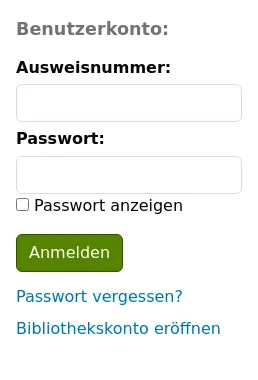
It is useful for libraries that do not use the term ‚card number‘ for their patrons‘ library ID.
Wichtig
This system preference does not change what can be input in the field. It only changes the label of the field. Patrons can login using either their username OR their card number, regardless of the label used.
OpacMaintenance
Fragt: ___ eine Warnung, dass der OPAC gewartet wird, anstelle des OPACs selbst.
Werte:
Nicht zeigen
Zeige
Voreingestellt: Nicht zeigen
Beschreibung:
Dieser Systemparameter ermöglicht es dem Systemadministrator, den OPAC während der Wartung abzuschalten und den Benutzern eine Meldung anzuzeigen. Wenn diese Einstellung auf „Anzeigen“ umgestellt ist, ist der OPAC nicht nutzbar.

Bemerkung
Dies ist die gleiche Warnung wie bei der Notwendigkeit eines Upgrades der Datenbank, aber ohne Vorbedingung.
Die Standardmeldung kann durch eine benutzerdefinierte Meldung ersetzt werden, indem der Anzeigeort OpacMaintenanceNotice im HTML-Anpassungstool verwendet wird.
OpacMaintenanceNotice
Achtung
Dieser Systemparameter existiert nicht mehr ab Version 23.11. Er befindet sich jetzt unter HTML-Anpassungen.
Fragt: Zeige folgendes HTML wenn der Systemparameter OpacMaintenance aktiv ist
Beschreibung:
Mit diesem Systemparameter können Sie den Text festlegen, den der OPAC anzeigt, wenn die Einstellung OpacMaintenance auf „Zeige“ gesetzt ist.
OpacMaxItemsToDisplay
Standard: 50
Asks: Display up to ___ items on the bibliographic record detail page.
Beschreibung:
This system preference will help with slow load times on the bibliographic detail pages by limiting the number of items to display by default. If the bibliographic record has more items than this, a link is displayed instead that allows the patron to choose to display all items.
OpacMetaDescription
Fragt: Diese Beschreibung wird in den Trefferlisten der Suchmaschine angezeigt (160 Zeichen).
Beschreibung:
Dieser Systemparameter fügt die Funktion hinzu, ein Meta-Beschreibungs-Tag mit Inhalt (bis zu 160 Zeichen) hinzuzufügen. Dies wird von Suchmaschinen verwendet, um der Bibliothek in den Suchergebnissen eine Beschreibung hinzuzufügen.
OpacMetaRobots
Version
Dieser Systemparameter wurde in Koha in Version 24.05 hinzugefügt.
Asks: Control how search engines index the OPAC by adding a robots meta tag with ___ options.
Werte:
[Alle auswählen]
nofollow
noindex
Default: [Select all]
Beschreibung:
This system preference lets you set a basic robots meta tag across all OPAC pages to control how search engines can interact with the site.
Select the options to add in the tag.
nofollow: This option tells search engines not to follow any links on the OPAC. If you don’t specify this rule, search engines may use links on the page to discover those linked pages.
noindex: This option instructs search engines not to index the OPAC at all. This means the OPAC won’t appear in search results. This might be useful for internal library catalogs that are not intended for public search or for test instances.
If you check both options, search engines won’t follow any links on the OPAC and won’t index the OPAC itself.
Wichtig
The default value will prevent law-abiding web crawlers from finding and indexing the OPAC. Make sure to change this system preference in production environments if you want your OPAC to be found on search engines.
OPACMySummaryHTML
Fragt: Zeige eine Spalte mit der Überschrift „Links“ im Reiter „Meine Übersicht“ wenn der Benutzer im OPAC eingeloggt ist, mit dem folgenden HTML (zum Deaktivieren frei lassen).
Beschreibung:
In dieser Einstellung können Sie HTML eingeben, das im Reiter „Ausleihen“ im Bereich „Ihre Zusammenfassung“ angezeigt wird, wenn Sie im OPAC angemeldet sind. Die Platzhalter {BIBLIONUMBER}, {TITLE}, {ISBN} und {AUTHOR} werden durch Informationen aus dem angezeigten Datensatz ersetzt. Dies kann verwendet werden, um „Teilen“-Links für soziale Netzwerke einzugeben oder Suchen in anderen Bibliothekskatalogen zu stellen.

Beispiel-Daten:
<p><a href="http://www.facebook.com/sharer.php?u=http://YOUROPAC.ORG/cgi-bin/koha/opac-detail.pl?biblionumber={BIBLIONUMBER}">Share on Facebook</a>
<br />TITLE: {TITLE}
<br />AUTHOR: {AUTHOR}
<br />ISBN: {ISBN}
<br />BIBLIONUMBER: {BIBLIONUMBER}</p>
OpacNoItemTypeImages
Fragt: ___ Medientypicons im OPAC.
Voreingestellt: Zeige
Werte:
Nicht zeigen
Zeige
Beschreibung:
Mit diesem Systemparameter kann der Systemadministrator festlegen, ob die Benutzer*innen ein Symbol für den Exemplartyp im Katalog im OPAC einstellen und sehen können.
Wenn die Bilder der Exemplartypen deaktiviert sind, werden die Textbeschriftungen für die Exemplartypen weiterhin im OPAC angezeigt.
Der Systemparameter noItemTypeImages wird verwendet, um die Materialtypicons in der Dienstoberfläche anzuzeigen oder zu verbergen.
OPACNoResultsFound
Kein Standard
Fragt: Zeige folgendes HTML wenn für eine Suchanfrage im OPAC keine Ergebnisse gefunden wurden
Dieses HTML wird unter der bestehenden Benachrichtigung angezeigt, dass für Ihre Suche keine Ergebnisse gefunden wurden.
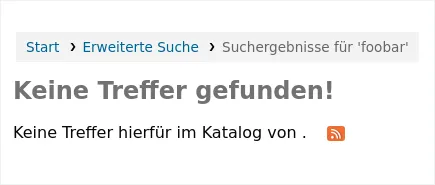
Hinweis
Es kann der Platzhalter {QUERY_KW} verwendet werden, um die Suchwörter aus der Suchanfrage einzufügen.
OPACPlayMusicalInscripts
Default: Nicht abspielen
Fragt: ___ die MIDI-Repräsentation von Noten auf der OPAC-Detailansicht ab.
Werte:
Nicht abspielen
Abspielen
Beschreibung:
Dieser Systemparameter steuert, ob ein kurzer Audioclip abgespielt werden kann, wenn der Detailansicht eines bibliografischen Datensatzes Musikinschriften hinzugefügt werden.
Hinweis
Der Systemparameter OPACShowMusicalInscripts muss auf ‚Zeige‘ gesetzt sein damit diese Clips angezeigt werden.
OpacPublic
Voreingestellt: Aktiviere
Fragt: ___ den öffentlichen Koha-OPAC. Der private OPAC erfordert, dass der Benutzer sich anmeldet, bevor recherchiert werden kann.
Werte:
Nicht aktivieren
Aktivieren
Beschreibung:
Dieser Systemparameter legt fest, ob Ihr OPAC für jeden zugänglich und durchsuchbar ist oder nur für Mitglieder der Bibliothek. Wenn diese Einstellung auf „Nicht aktivieren“ gesetzt ist, können nur Mitglieder, die im OPAC angemeldet sind, suchen. Die meisten Bibliotheken belassen diese Einstellung auf dem Standardwert „Aktivieren“, damit ihr OPAC von jedermann durchsucht werden kann und nur eine Anmeldung für den Zugriff auf personalisierte Inhalte erforderlich ist.
OPACResultsLibrary
Standard: Heimatbibliothek
Asks: Zeige in Suchresultaten im OPAC für das Exemplar: ___. Hinweis: Momentan implementiert für MARC21 und UNIMARC.
Werte:
aktueller Standort
Heimatbibliothek
OPACResultsMaxItems
Fragt: Nicht mehr als ___ einzelne (verfügbare) Exemplare in den OPAC XSLT-Suchergebnissen anzeigen
Standardwert: 1
Beschreibung:
Dieser Systemparameter wird verwendet, um die Anzahl der in den Suchergebnissen im OPAC angezeigten verfügbaren Exemplare zu begrenzen.
Wenn Sie viele Informationen in OpacItemLocation anzeigen und viele Exemplare haben, kann die Ansicht für die Benutzer*innen unübersichtlich oder überwältigend werden. Verwenden Sie diesen Systemparameter, um nur die Informationen für eine begrenzte Anzahl von einzelnen Exemplaren anzuzeigen. Standardmäßig werden in den Suchergebnissen nur die Details (z. B. Standort, Signatur usw.) zu einem einzigen Exemplar angezeigt.
Die Benutzer*innen können weiterhin auf den detaillierten Datensatz klicken, um die Details jedes einzelnen Exemplars zu sehen.
Dieser Systemparameter wirkt sich auf die Anzeige von „verfügbaren“ und „als Referenz verfügbaren“ Exemplaren aus
Bemerkung
Status, die „als Referenz verfügbar“ sind, werden in Referenz_NFL_Statuses verwaltet.
Bemerkung
OPACResultsMaxItemsUnavailable bewirkt dasselbe wie diese Einstellung für nicht verfügbare Exemplare.
OPACSearchForTitleIn
Fragt: Zeige „Weitere Suchen“ als Option auf den Detailsichten von Exemplaren im OPAC an, mit dem folgenden HTML-Code (frei lassen, um Funktion zu deaktivieren)
Voreingestellt:
<a href="https://worldcat.org/search?q={TITLE}" target="_blank">Other Libraries (WorldCat)</a>
<a href="https://scholar.google.com/scholar?q={TITLE}" target="_blank">Other Databases (Google Scholar)</a>
<a href="https://www.bookfinder.com/search/?author={AUTHOR}&title={TITLE}&st=xl&ac=qr" target="_blank">Online Stores (Bookfinder.com)</a>
<a href="https://openlibrary.org/search?author=({AUTHOR})&title=({TITLE})" target="_blank">Open Library (openlibrary.org)</a>
Beschreibung:
Geben Sie Suchlinks zu anderen Katalogen ein. Diese erscheinen in der Option „Weitere Suchen“ im detaillierten Datensatz im OPAC.
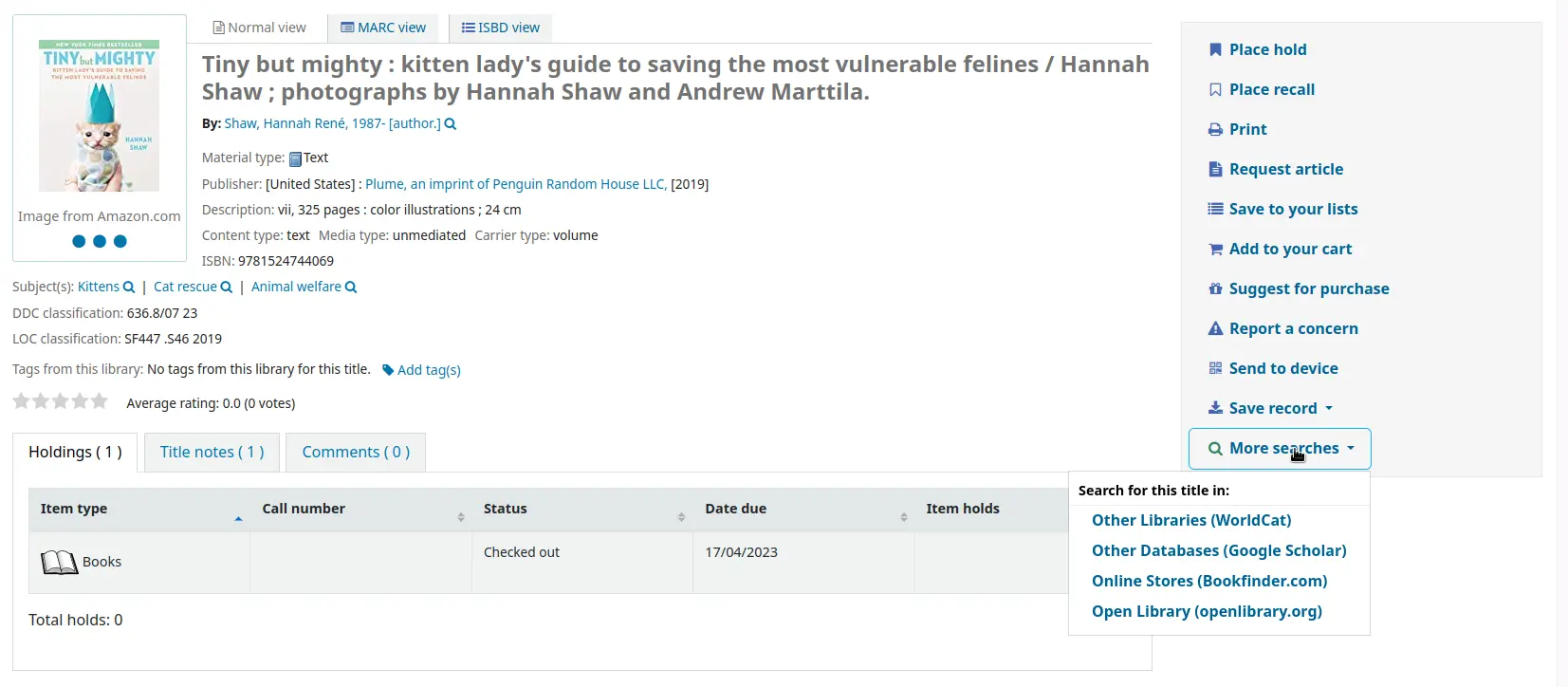
Die Platzhalter
{BIBLIONUMBER},{CONTROLNUMBER},{OCLC_NO},{TITLE},{ISBN},{ISSN}and{AUTHOR}werden mit der entsprechenden Information aus dem angezeigten Datensatz ersetzt.Um nach der OCLC-Nummer im Worldcat zu suchen,
the record must have the OCLC number in 035$a, with the (OCoLC) prefix, for example:
035 _a(OCoLC)62385712
the link to add in the preference is:
<a href="https://worldcat.org/search?q={OCLC_NO}" target="_blank">WorldCat (via OCLC number)</a>
OpacSeparateHoldings und OpacSeparateHoldingsBranch
OpacSeparateHoldings Standard: Nicht trennen
OpacSeparateHoldingsBranch Standard: Heimatbibliothek
Asks: ___ items display into two tabs, where the first tab contains items whose ___ is the logged in patron’s library. The second tab will contain all other items.
OpacSeparateHoldings Werte:
Nicht trennen
Teile
OpacSeparateHoldingsBranch Werte:
Bestandsbibliothek
Heimatbibliothek
Beschreibung:
Mit diesem Systemparameter können Sie entscheiden, ob Sie die Bestandsinformationen auf der bibliografischen Detailseite im OPAC in mehrere Reiter aufteilen möchten. In der Standardeinstellung werden alle Bestände in einem Reiter angezeigt.
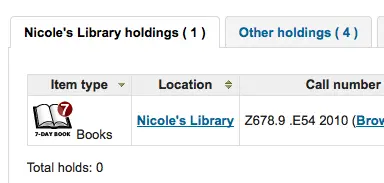
OPACShowCheckoutName
Voreingestellt: Nicht zeigen
Fragt: ___ Informationen zum Entleiher in den Exemplarinformationen im OPAC.
Werte:
Nicht zeigen
Zeige
Beschreibung:
Mit diesem Systemparameter können alle Benutzer*innen sehen, wer das Buch ausgeliehen hat, wenn es ausgeliehen ist. In kleinen Firmenbibliotheken (wo der OPAC hinter einer Firewall liegt und nicht öffentlich zugänglich ist) kann dies hilfreich sein, damit die Mitarbeiter*innen den/die Benutzer*in mit dem Buch einfach selbst kontaktieren können. In größeren öffentlichen und wissenschaftlichen Bibliotheken würde die Einstellung „Anzeigen“ ernsthafte Datenschutzprobleme aufwerfen.
OPACShowHoldQueueDetails
Standard: Zeige keine Vormerkungsdetails
Fragt: ___ den Benutzern im OPAC.
Werte:
Zeige keine Vormerkungsdetails
Zeige Vormerkungen
Zeige Vormerkungen und ihr Prioritätslevel
Zeige Prioritätslevel
Beschreibung:
Mit diesem Systemparameter können Sie auswählen, welche Art von Vormerkungsinformationen den Benutzern zur Verfügung gestellt werden sollen, wenn sie sich bei ihrem Konto im OPAC anmelden. Wenn Sie die Option wählen, Informationen zur Vormerkungspriorität einzuschließen, wird die Liste der Vormerkungen zunächst nach Priorität sortiert.
OPACShowLibraries
Version
Dieses Feature kam in Koha-Version 24.11 hinzu.
Asks: ___ a link to a page in the OPAC showing information about each library.
Werte:
Nicht zeigen
Zeige
Voreingestellt: Zeige
Beschreibung:
This system preference lets you decide whether to display the ‚Libraries‘ link underneath the search bar of the OPAC.

The Libraries page it links to is generated by Koha based on your libraries settings.
OPACShowMusicalInscripts
Voreingestellt: Nicht zeigen
Fragt: ___ Noten auf der Detailansicht im OPAC.
Werte:
Nicht zeigen
Zeige
Beschreibung:
Dieser Systemparameter ermöglicht die Anzeige von Musikinskripten in der Detailansicht eines bibliografischen Datensatzes im OPAC. Die MARC-Daten für die Inskripte werden dem 031 MARC21 Tag des Datensatzes hinzugefügt. Audioclips können auch angezeigt werden, wenn die Einstellung OPACPlayMusicalInscripts auf „Abspielen“ gesetzt ist.
OpacShowRecentComments
Voreingestellt: Nicht zeigen
Fragt: ___ Link zu kürzlich verfassten Kommentaren in der Navigationsleiste des OPACs.
Werte:
Nicht zeigen
Zeige
Beschreibung:
Wenn Sie Kommentare in Ihrem OPAC zulassen, indem Sie OPACComments auf „Zulassen“ setzen, können Sie mit dieser Einstellung einen Link zu den letzten Kommentaren unter dem Suchfeld oben in Ihrem OPAC einfügen.

OpacStarRatings
Fragt: Zeige Sternebewertungen auf ___ Seiten.
Standard: nein
Werte:
Ergebnisse, Details und Benutzer
Sternebewertungen erscheinen in
die Trefferliste
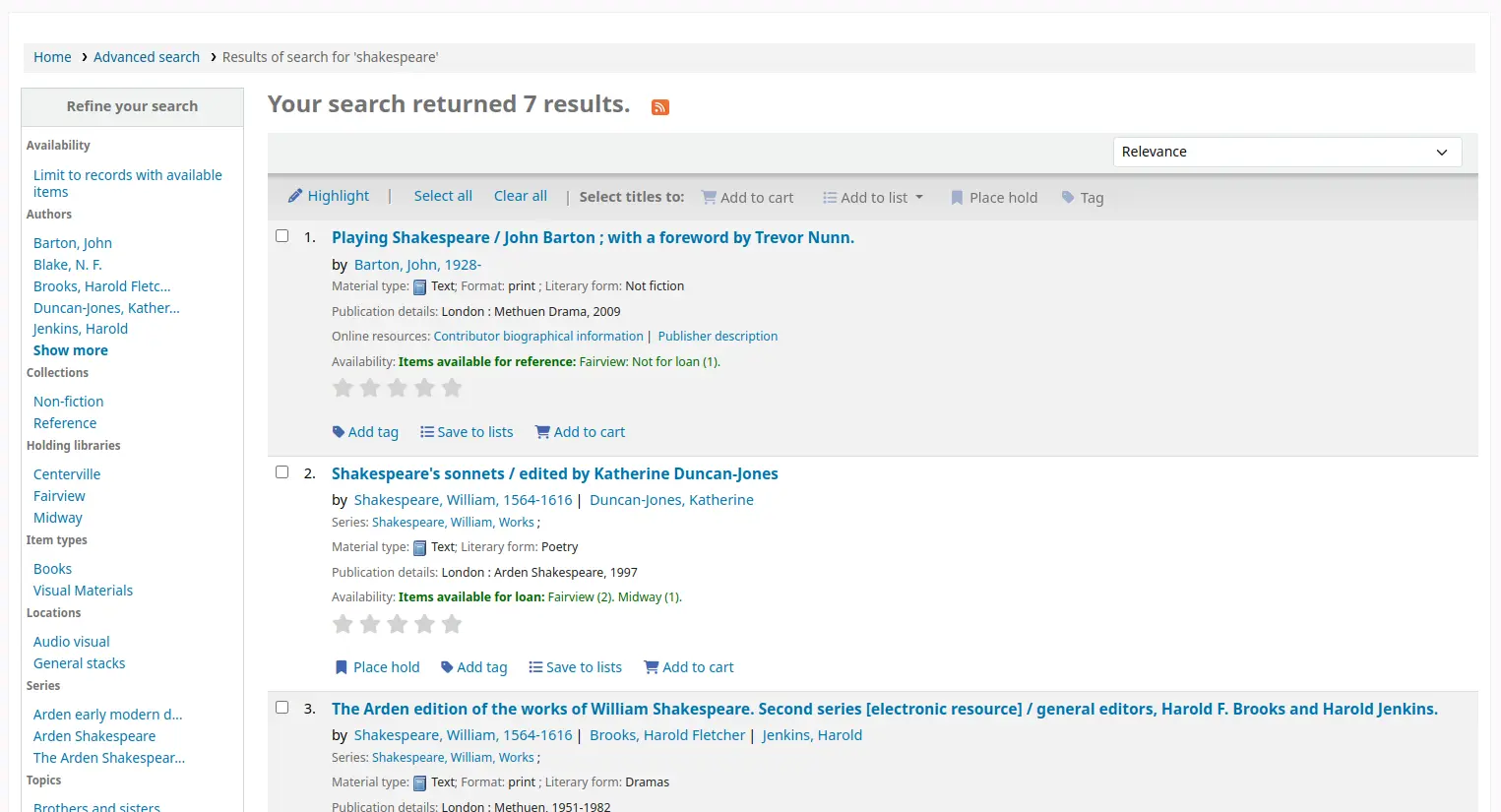
die Detailseite eines bibliographischen Datensatzes
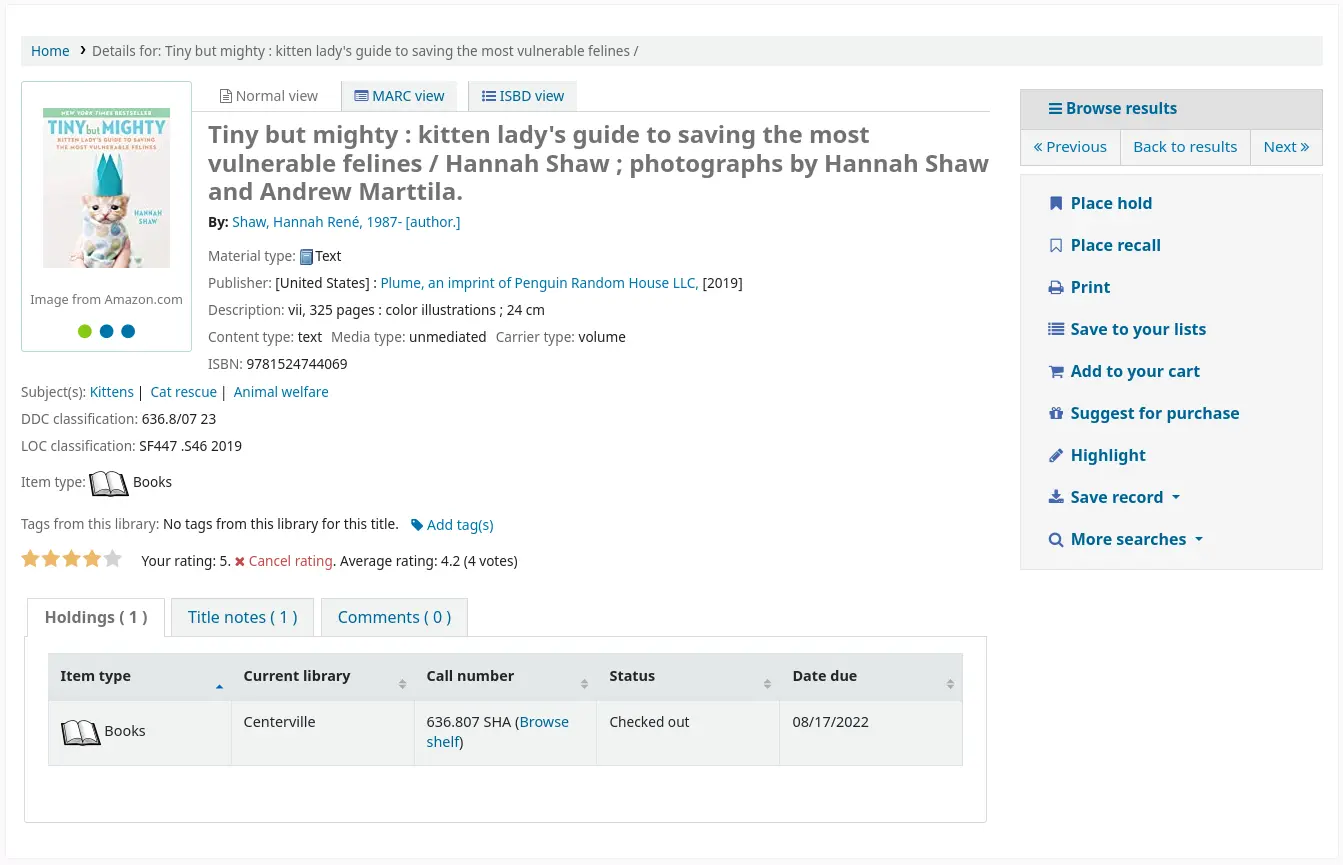
die Liste der Ausleihen des Benutzers
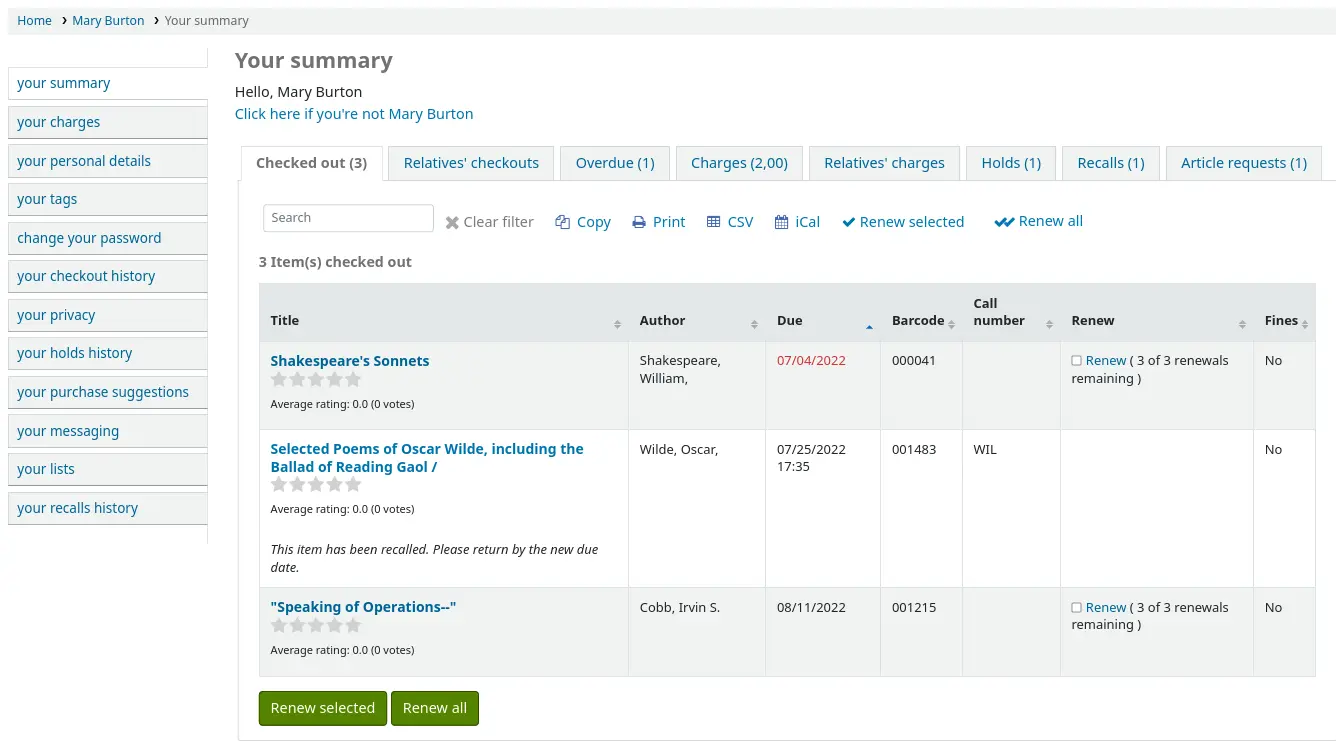
die Ausleihhistorie eines Benutzers

nur Details
Sternbewertungen erscheinen auf der Detailseite des bibliografischen Datensatzes
keine
Sternebewertungen sind deaktiviert
Beschreibung:
Mit Sternebewertungen können Ihre Benutzer*innen Bewertungen abgeben, ohne eine vollständige Rezension zu hinterlassen.
Nicht eingeloggte Besucher können nur die Sterne und die Durchschnittsbewertung sehen.
Eingeloggte Benutzer*innen können auf die Sterne klicken, entweder auf der Detailseite des bibliografischen Eintrags, in ihrer aktuellen Ausleihliste oder in der Ausleihhistorie, um ihre eigene Bewertung abzugeben.
Ein Klick auf die Sterne in den Suchergebnissen hinterlässt keine Bewertung.
opacthemes
Standard: bootstrap
Fragt: Verwende das ___-Theme im OPAC.
Werte:
bootstrap
Bootstrap Theme
Dieses Theme ist vollständig responsiv
OPACURLOpenInNewWindow
Standard: nicht machen
Fragt: Öffne Links zu anderen Webseiten (z.B. Amazon oder OCLC) im OPAC ___ in einem neuen Fenster.
Werte:
machen
versuche nicht
Beschreibung:
Dieser Systemparameter legt fest, ob URLs im OPAC in einem neuen Fenster geöffnet werden sollen oder nicht. Wenn ein*e Benutzer*innen auf einen Link im OPAC klickt, muss er/sie sich nicht darum kümmern, von seinen/ihren Suchergebnissen weg zu navigieren.
OPACUserCSS
Fragt: Schließe folgendes CSS auf allen Seiten im OPAC ein
Beschreibung:
Mit OPACUserCSS kann der/die Administrator*in Stile eingeben, die das Standard-CSS des OPACs überschreiben, wie es in „opaclayoutstylesheet“ oder „opacstylesheet“ definiert ist. Stile können für jeden der Selektoren im Standard-Stylesheet eingegeben werden. Das Standard-Stylesheet befindet sich wahrscheinlich unter http://your_koha_address/opac-tmpl/bootstrap/css/opac.css. Im Gegensatz zu OpacAdditionalStylesheet und opaclayoutstylesheet bettet diese Einstellung das CSS direkt in Ihre OPAC-Seiten ein.
Bemerkung
Benutzerdefiniertes CSS kann dem OPAC auch auf Bibliotheksebene hinzugefügt werden, indem das Feld ‚UserCSS‘ im Bibliotheksformular verwendet wird.
OPACUserJS
Fragt: Füge den folgenden JavaScript-Code auf allen Seiten des OPACs ein
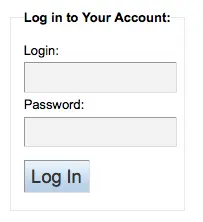

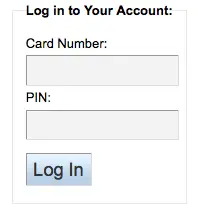
Beschreibung:
Dieser Systemparameter ermöglicht es dem Administrator, JavaScript oder JQuery einzugeben, das auf allen Seiten des OPAC eingebettet wird. Administratoren können diese Einstellung verwenden, um einige der interaktiven Bereiche von Koha anzupassen, z. B. um den Text für die Anmeldeaufforderungen anzupassen. Beispiele für JQuery-Skripte, die von Koha-Bibliotheken verwendet werden, finden Sie im Wiki: http://wiki.koha-community.org/wiki/JQuery_Library.
Bemerkung
Benutzerdefiniertes JavaScript kann dem OPAC auch auf Bibliotheksebene hinzugefügt werden, indem das Feld ‚UserJS‘ im Bibliotheksformular verwendet wird.
OPACUserSummary
Voreingestellt: Zeige
Asks: ___ a summary of a logged in patron’s checkouts, overdues, holds and charges on the OPAC start page
Beschreibung:
When activated, this preference system replaces the login form on the OPAC main page by a summary when the patron is logged in.
OPACXSLTDetailsDisplay
Fragt: Konfiguration der Detailansicht im OPAC: ___
Voreingestellt: Standard
Werte:
Geben Sie „Standard“ ein um das Standard-Stylesheet zu verwenden
Geben Sie eienn Pfad zu einer XSLT-Datei ein
Zum Beispiel, /path/to/koha/and/your/stylesheet.xsl
In einem mehrsprachigen System können Sie {langcode} in den Pfad eingeben, um Koha anzuweisen, im richtigen Sprachordner zu suchen
Zum Beispiel, /home/koha/src/koha-tmpl/opac-tmpl/bootstrap/{langcode}/xslt/MARC21slim2OPACDetail.xsl
Zum Beispiel, http://mykohaopac.org/{langcode}/stylesheet.xsl
Geben Sie einen URL zu einem externen Stylesheet ein
Zum Beispiel, http://mykohaopac.org/stylesheet.xsl
Beschreibung:
XSLT-Stylesheets ermöglichen die Anpassung der Details, die bei der Anzeige eines bibliografischen Datensatzes auf dem Bildschirm angezeigt werden. Mit diesem Systemparameter können Sie entweder das mit Koha gelieferte Standardaussehen verwenden oder Ihr eigenes Stylesheet entwerfen.
Dieser Systemparameter steuert die Anzeige des detaillierten bibliographischen Datensatzes im OPAC.
Wenn Sie ein benutzerdefiniertes Stylesheet nutzen, das MARC-Felder verwendet, aktivieren Sie den Systemparameter PassItemMarcToXSLT. Andernfalls sind Exemplarfelder für die Verwendung in XSLT-Stylesheets nicht verfügbar.
Siehe auch:
OPACXSLTListsDisplay
Fragt: Verwende das folgende XSLT-Stylesheet für die Anzeige von Listen im OPAC: ___
Voreingestellt: Standard
Werte:
Geben Sie „Standard“ ein um das Standard-Stylesheet zu verwenden
Geben Sie eienn Pfad zu einer XSLT-Datei ein
Zum Beispiel, /path/to/koha/and/your/stylesheet.xsl
In einem mehrsprachigen System können Sie {langcode} in den Pfad eingeben, um Koha anzuweisen, im richtigen Sprachordner zu suchen
Zum Beispiel, /home/koha/src/koha-tmpl/opac-tmpl/bootstrap/{langcode}/xslt/MARC21slim2OPACResults.xsl
Zum Beispiel, http://mykohaopac.org/{langcode}/stylesheet.xsl
Geben Sie einen URL zu einem externen Stylesheet ein
Zum Beispiel, http://mykohaopac.org/stylesheet.xsl
Beschreibung:
XSLT-Stylesheets ermöglichen die Anpassung der Details, die beim Anzeigen von Listen auf dem Bildschirm angezeigt werden. Mit diesem Systemparameter können Sie entweder das mit Koha gelieferte Standardaussehen verwenden oder Ihr eigenes Stylesheet entwerfen.
Dieser Systemparameter steuert die Anzeige von Datensätzen in einer Liste im OPAC.
Wenn Sie ein benutzerdefiniertes Stylesheet nutzen, das MARC-Felder verwendet, aktivieren Sie den Systemparameter PassItemMarcToXSLT. Andernfalls sind Exemplarfelder für die Verwendung in XSLT-Stylesheets nicht verfügbar.
Siehe auch:
OPACXSLTResultsDisplay
Fragt: Zeige OPAC-Suchergebnisse unter Verwendung des XSLT-Stylesheets unter ___
Voreingestellt: Standard
Werte:
Geben Sie „Standard“ ein um das Standard-Stylesheet zu verwenden
Geben Sie eienn Pfad zu einer XSLT-Datei ein
Zum Beispiel, /path/to/koha/and/your/stylesheet.xsl
In einem mehrsprachigen System können Sie {langcode} in den Pfad eingeben, um Koha anzuweisen, im richtigen Sprachordner zu suchen
Zum Beispiel, /home/koha/src/koha-tmpl/opac-tmpl/bootstrap/{langcode}/xslt/MARC21slim2OPACResults.xsl
Zum Beispiel, http://mykohaopac.org/{langcode}/stylesheet.xsl
Geben Sie einen URL zu einem externen Stylesheet ein
Zum Beispiel, http://mykohaopac.org/stylesheet.xsl
Beschreibung:
XSLT-Stylesheets ermöglichen die Anpassung der Details, die beim Anzeigen von Trefferlisten auf dem Bildschirm angezeigt werden. Mit diesem Systemparameter können Sie entweder das mit Koha gelieferte Standardaussehen verwenden oder Ihr eigenes Stylesheet entwerfen.
Dieser Systemparameter steuert die Anzeige der Datensätze in den Suchergebnissen im OPAC.
Wenn Sie ein benutzerdefiniertes Stylesheet nutzen, das MARC-Felder verwendet, aktivieren Sie den Systemparameter PassItemMarcToXSLT. Andernfalls sind Exemplarfelder für die Verwendung in XSLT-Stylesheets nicht verfügbar.
Siehe auch:
Reference_NFL_Statuses
Fragt: Zeige folgenden HTML-Code unterhalb der Facetten in der Trefferliste im OPAC: ___
Standard: 1|2
Beschreibung:
Dieser Systemparameter wird verwendet, um festzulegen, welche „nicht ausleihbar“-Status als „Als Referenz verfügbar“ erscheinen sollen

Wenn der Status „nicht ausleihbar“ in der Liste „Reference_NFL_Statuses“ enthalten ist, wird er im OPAC in grüner Schrift als „Als Referenz verfügbar“ angezeigt.
Die anderen „nicht ausleihbar“-Status erscheinen als „Nicht verfügbar“

Wenn der Status „nicht ausleihbar“ NICHT in der Liste „Reference_NFL_Statuses“ enthalten ist, wird er im OPAC als „Nicht verfügbar“ in roter Schrift angezeigt.
Die Werte für den Status „nicht ausleihbar“ sind in der Normierter-Werte-Kategorie NOT_LOANy hinterlegt.
Werte müssen durch eine Pipe (|) getrennt werden.
Authentifizierung
OPACShibOnly
Fragt: ___, dass Benutzer sich auf anderem Wege als via Shibboleth anmelden.
Voreingestellt: Ja
Werte:
Zulassen
Nicht erlauben
Beschreibung:
Dieser Systemparameter wird verwendet, um das Einloggen in den OPAC nur über Shibboleth zuzulassen.
Features
numSearchRSSResults
Standard: 50
Fragt: Zeige ___ Suchergebnisse im RSS-Feed an.
Beschreibung:
Standardmäßig werden im RSS-Feed, der automatisch für jede Suchergebnisseite erzeugt wird, 50 Einträge aufgelistet. Dies kann für manche RSS-Feed-Reader zu viel sein, und für manche Personen ist es nicht genug. Mit diesem Systemparameter können Sie diese Zahl anpassen, um die beste Anzahl von Ergebnissen für Ihre Benutzer*innen anzuzeigen.
OPACAcquisitionDetails
Fragt: ___ Erwerbungsdetails in der Detailansicht im OPAC.
Voreingestellt: Nicht zeigen
Werte:
Nicht zeigen
Zeige
Beschreibung:
Wenn diese Einstellung auf „Anzeigen“ gesetzt ist, wird den Benutzern im Reiter „Bestand“ des detaillierten Datensatzes im OPAC angezeigt, wie viele Exemplare bestellt sind.

Wenn die Exemplare bei der Bestellung erstellt werden, wird angezeigt, wie viele Exemplare bestellt sind, und die einzelnen Exemplare haben einen Vermerk „bestellt“ unter dem Status.
Wenn das Exemplar beim Erhalt der Bestellung oder beim Katalogisieren des Datensatzes erstellt wird, wird nur angezeigt, wie viele Exemplare bestellt sind.
Wenn die Option „Nicht anzeigen“ aktiviert ist, erscheint im Reiter „Bestand“ der Hinweis „Keine physischen Exemplare für diesen Datensatz“, wenn die Exemplare beim Erhalt oder beim Katalogisieren des Datensatzes erstellt werden. Exemplare werden ohne besonderen Hinweis angezeigt, wenn sie bei der Bestellung angelegt werden.
Bemerkung
Beachten Sie, dass Exemplare als bestellt gelten, wenn der Korb geschlossen ist. Diese Einstellung hat keine Auswirkung, solange der Korb noch offen ist.
opacbookbag
Voreingestellt: Ja
Fragt: ___ dass Benutzer Titel temporär über den Korb im OPAC zwischenspeichern können.
Werte:
Zulassen
Nicht zulassen
Beschreibung:
Dieser Systemparameter ermöglicht es dem/der Benutzer*in, eine Liste der im Katalog gefundenen Exemplare vorübergehend zu speichern. Über die Büchertasche oder den Einkaufswagen kann der/die Benutzer*in eine Liste der gefundenen Exemplare ausdrucken oder per E-Mail versenden. Der/die Benutzer*in muss nicht eingeloggt sein. Diese Liste ist temporär und wird am Ende der Sitzung geleert bzw. gelöscht.
OpacBrowser
Wichtig
Dieser Systemparameter bezieht sich aktuell nur auf Installationen, die UNIMARC nutzen.
Voreingestellt: Nicht zulassen
Asks: ___ patrons to browse subject authorities on the OPAC.
Werte:
Zulassen
Nicht zulassen
Wichtig
Führen Sie den Cron-Job authorities browser aus, um eine Browser-Liste zu erstellen
OpacBrowseResults
Standard: aktiviere
Fragt: ___ das Blättern und Stöbern in Trefferlisten von der OPAC-Detailansicht aus.
Werte:
deaktiviere
aktiviere

Beschreibung:
Dieser Systemparameter steuert die Option, zu den Suchergebnissen zurückzukehren oder sie von der Detailseite im OPAC aus zu durchsuchen.
OpacBrowseSearch
Fragt: ___ Oberfläche zum Durchsuchen aller Bestände (nur Elasticsearch).
Werte:
Deaktiviere
Aktivieren
Voreingestellt: Deaktiviere
Beschreibung:
Dieser Systemparameter ermöglicht es OPAC-Benutzern, Datensätze nach Autor, Titel oder Thema zu durchsuchen.
Wenn die Option „Aktivieren“ eingestellt ist, erscheint die Option „Durchsuchen“ im OPAC-Bereich „Weitere Suchen“.
Warnung
Dieser Systemparameter wirkt sich nur aus wenn Elasticsearch als Suchmaschine festgelegt wurde.
Wenn Sie sich nicht sicher sind, welche Suchmaschine Ihr Koha-System verwendet, überprüfen Sie zunächst den Systemparameter SearchEngine.
OpacCatalogConcerns
Fragt: ___ dass Benutzer Anfragen zu Katalogdatensätzen stellen.
Werte:
Zulassen
Nicht zulassen
Voreingestellt: Nicht zulassen
Beschreibung:
Dieser Systemparameter wird genutzt, um die Funktion für Anfragen im OPAC zu aktivieren.
OpacCloud
Wichtig
Dieser Systemparameter bezieht sich aktuell nur auf französische Systeme.
Voreingestellt: Nicht zeigen
Asks: ___ a subject cloud on the OPAC.
Werte:
Nicht zeigen
Zeige
Wichtig
Führen Sie den Cron-Job authorities browser aus, um eine Browser-Liste zu erstellen
OPACDetailQRCode
Fragt: ___ die Option, einen QR-Code in der Detailansicht im OPAC anzuzeigen.
Werte:
Deaktiviere
Aktivieren
Voreingestellt: Deaktiviere
Beschreibung:
Wenn diese Einstellung aktiviert ist, wird eine neue Option „An Gerät senden“ in der Liste der Optionen auf der OPAC-Detailseite angezeigt. Wenn dieser Link angeklickt wird, wird ein QR-Code angezeigt, der mit einem kompatiblen Gerät gescannt werden kann, um die bibliografischen Angaben auf diesem Gerät zu speichern.
OPACDisableSendList
Version
This system preference was added to Koha in version 25.05.
Asks: ___ OPAC users to email lists via a ‚Send list‘ button.
Werte:
Zulassen
Nicht zulassen
Voreingestellt: Ja
Beschreibung:
This system preference determines whether a ‚Send list‘ button appears in OPAC lists allowing OPAC users to send lists by email.
OPACFinesTab
Asks: ___ patrons to access the charges tab on their account page on the OPAC.
Werte:
Zulassen
opacuserlogin muss auf ‚zulassen‘ gesetzt sein
Nicht zulassen
Voreingestellt: Ja
OpacHoldNotes
Fragt: ___ dass Benutzer eine Vormerknotiz beim Setzen einer Vormerkung eintragen.
Voreingestellt: Nicht zulassen
Werte:
Zulassen
Nicht zulassen
Beschreibung:
Dieser Systemparameter legt fest, ob die Benutzer*innen die Möglichkeit haben, eine Notiz einzugeben, wenn sie ihre Vormerkung im OPAC bestätigen. Die Benutzer*innen müssen auf den Link „Weitere Optionen anzeigen“ klicken, um das Notizfeld zu sehen.
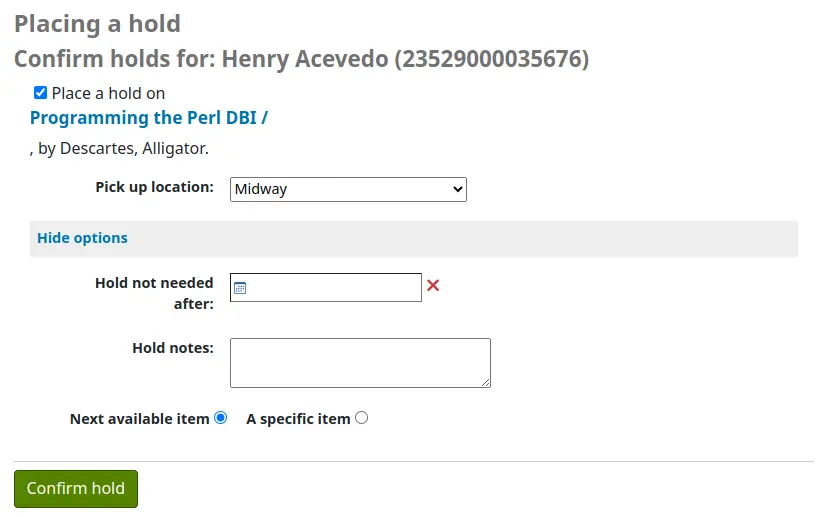
Um diese Notiz in der Dienstoberfläche anzuzeigen, gehen Sie zu Tabelleneinstellung und deaktivieren Sie die Checkbox „Ist standardmäßig ausgeblendet“ neben der Spalte „Notizen“ in der Tabelle „holds-table“ (unter „Ausleihe“ und/oder „Benutzer“).
OPACISBD
Voreinstellung: Siehe ISBD view configuration <https://wiki.koha-community.org/wiki/ISBD_view_configuration> im Wiki.
Fragt: Verwende im OPAC folgende ISBD-Vorlage:
Beschreibung:
Hier wird eingestellt, wie die ISBD-Informationen im OPAC angezeigt werden. Die aufgelisteten Elemente können neu angeordnet werden, um unterschiedliche ISBD-Anzeigen zu erhalten. ISBD, die „International Standard Bibliographic Description“, wurde erstmals 1969 durch IFLA (International Federation of Library Associations) eingeführt, um Richtlinien für die Formalerschließung festzulegen. Der Zweck der ISBD ist, den internationalen Austausch bibliografischer Daten für verschiedene Materialien zu unterstützen.
OpacItemLocation
Fragt: ___ für Exemplare in der Trefferliste des OPACs.
Standard: Bibliothek und Signatur
Werte:
Bibliothek und Signatur
Bibliothek, Sammlungscode und Signatur
nur Bibliothek
Bibliothek, Standort und Signatur
Beschreibung:
Mit dieser Einstellung können Benutzer*innen des XSLT-Stylesheets für OPAC-Ergebnisse wählen, ob neben der Bibliothek und Signatur auch der Sammlungscode oder der Standort angezeigt werden soll.
OpacNewsLibrarySelect
Fragt: ___ eine Bibliotheksauswahlliste für News-Einträge im OPAC.
Voreingestellt: Nicht zeigen
Werte:
Nicht zeigen
Zeige
Beschreibung:
Bei der Einstellung „Anzeigen“ wird ein Dropdown-Menü über den Nachrichten im OPAC angezeigt, so dass die Benutzer*innen auswählen können, aus welcher Bibliothek sie die Nachrichten sehen möchten.

Bei der Einstellung „Nicht anzeigen“ sehen unangemeldete OPAC-Benutzer nur systemweite Nachrichten (auf „Alle Bibliotheken“ eingestellte Nachrichten) und angemeldete Benutzer*innen sehen Nachrichten für ihre Heimatbibliothek und systemweite Nachrichten.
OpacPasswordChange
Voreingestellt: Ja
Fragt: ___ Benutzern, ihr eigenes Passwort im OPAC zu ändern.
Werte:
Zulassen
opacuserlogin muss auf ‚zulassen‘ gesetzt sein
Nicht zulassen
Wichtig
Wenn dieser Schalter aktiviert wird, ist die Authentifizierung über LDAP nicht mehr möglich.
OPACpatronimages
Voreingestellt: Nicht zeigen
Fragt: ___ Foto des Benutzers im Benutzerkonto im OPAC.
Werte:
Nicht zeigen
Zeige
Beschreibung:
Wenn patronimages so eingestellt ist, dass das Hochladen von Bildern über die Dienstoberfläche erlaubt ist, dann zeigt die Einstellung „Zeigen“ dem/der Benutzer*in das Bild, das Sie für ihn/sie gespeichert haben, wenn er seine/sie ihre persönlichen Informationen über sein/ihr Konto im OPAC anzeigt.
OPACReportProblem
Fragt: ___ die Möglichkeit, dass Benutzer über den OPAC Fehlermeldungen zu OPAC-Seiten an die Bibliothek oder den Koha-Administrator melden.
Voreingestellt: Ja
Werte:
Nicht zulassen
Zulassen
Beschreibung:
Dieser Systemparameter steuert die Funktion ‚Melde ein Problem‘ im OPAC, die es den Benutzern ermöglicht, Problemberichte aus dem OPAC zu senden.
Problemberichte werden per E-Mail an die Adresse in KohaAdminEmailAddress oder an die E-Mail-Adresse der Bibliothek gesendet.
Bemerkung
Die per E-Mail gesendete Benachrichtigung kann im Werkzeug Benachrichtigungen und Quittungen angepasst werden. Der Buchstabencode lautet PROBLEM_REPORT.
Problemberichte werden im Werkzeug OPAC-Problembericht verwaltet.
OpacResetPassword
Standard: nicht erlaubt
Fragt: Bibliotheksbenutzer ___ im OPAC das Verfahren „Passwort vergessen“ anstossen.
Werte:
erlaubt
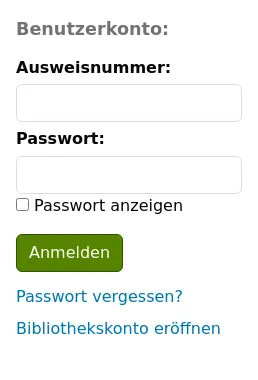
nicht erlaubt
Beschreibung:
Dieser Systemparameter steuert, ob Sie den Benutzern des öffentlichen Katalogs einen Link „Passwort vergessen“ anzeigen oder nicht. Erfahren Sie mehr im Bereich OPAC dieses Handbuchs.
OPACShowSavings
Fragt: Berechne den Betrag, den ein Benutzer durch die Nutzung der Bibliothek „gespart“ hat, basierend auf den Wiederbeschaffungspreisen, und zeigen Sie ihn an: ___
Voreingestellt: Keine
Werte (Mehrfachauswahl):
[Alle auswählen]
im Benutzer Zusammenfassungsfeld auf der OPAC-Homepage (der Systemparameter OPACUserSummary muss aktiviert sein)
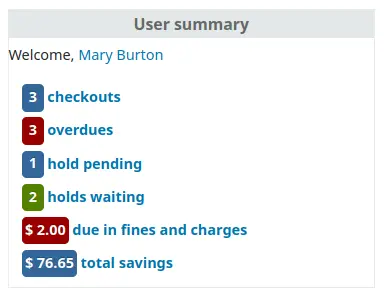
auf der Seite „Ihre Zusammenfassung“ der Benutzer

auf der Seite Ausleihhistorie der/die Benutzer*in (der Systemparameter opacreadinghistory muss aktiviert sein)

Beschreibung:
Dieser Systemparameter prüft die Ausleihhistorie des Benutzers, addiert die Wiederbeschaffungspreise aller zuvor und aktuell ausgeliehenen Exemplare und zeigt die Summe auf den ausgewählten Seiten an.
Wichtig
Die Wiederbeschaffungspreise der Exemplare werden verwendet, um die Einsparungen zu addieren. Stellen Sie sicher, dass Ihre Exemplare Wiederbeschaffungspreise haben, bevor Sie diese Informationen anzeigen.
Warnung
Wenn Ausleihhistorien anonymisiert werden oder wenn alte Ausleihen durch das Skript cleanup_database gelöscht werden, sind die Informationen zu Einsparungen ungenau.
Bemerkung
Wenn ein*e Benutzer*in ein Exemplar mehr als einmal ausleiht, wird es nur einmal für die Ersparnis gezählt.
OpacTopissue
Voreingestellt: Nicht zulassen
Fragt: ___ dass Benutzer Zugang zu einer Liste der am häufigsten entliehenen Medien im OPAC haben.
Werte:
Zulassen
Ein Link zu „Am Beliebtesten“ erscheint oben in Ihrem OPAC

Nicht zulassen
Beschreibung:
Mit diesem Systemparameter kann der/die Administrator*in festlegen, dass der Link „Am Beliebtesten“ oben im OPAC unter dem Suchfeld angezeigt wird. Die Seite „Am Beliebtesten“ (Beliebteste Titel) zeigt die am häufigsten ausgeliehenen Titel in der Bibliothek an, je nachdem, wie oft ein Titel ausgeliehen wurde. So können die Benutzer*innen sehen, welche Titel in ihrer Community beliebt sind. Es wird empfohlen, diese Einstellung auf „Nicht zulassen“ zu belassen, bis Sie Koha ein paar Monate in Betrieb genommen haben, da die angezeigten Daten sonst kein genaues Bild der Beliebtheit in Ihrer Bibliothek vermitteln.
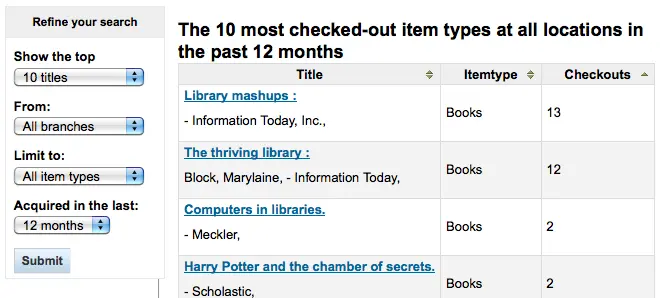
opacuserlogin
Voreingestellt: Ja
Fragt: ___, dass Benutzer sich an ihrem Benutzerkonto im OPAC anmelden.
Werte:
Zulassen
Nicht zulassen
Der OPAC ist auch dann noch durchsuchbar, wenn sich die Benutzer*innen nicht anmelden können, es wird lediglich der Zugriff auf das Benutzerkonto über den OPAC deaktiviert
QuoteOfTheDay
Fragt: Zeige das Zitat des Tages auf der ___ Hauptseite an
Standardwert: (keine)
Werte:
[Alle auswählen]
OPAC
Dienstoberfläche
Beschreibung:
Mit diesem Systemparameter können Sie festlegen, wo die Zitate aus dem Zitat des Tages-Editor erscheinen sollen.
OPACHoldRequests
Voreingestellt: Ja
Fragt: ___ dass Benutzer im OPAC vormerken können.
Werte:
Zulassen
opacuserlogin muss auf ‚zulassen‘ gesetzt sein
Nicht zulassen
OPACComments
Fragt: ___ dass Benutzer eigene Rezensionen und Kommentare im OPAC verfassen.
Voreingestellt: Ja
Werte:
Zulassen
Alle Kommentare/Rezensionen von Benutzern müssen moderiert werden, bevor sie im OPAC erscheinen
opacuserlogin muss auf ‚Zulassen‘ gesetzt sein
Nicht zulassen
Beschreibung:
Dieser Systemparameter legt fest, ob Benutzer*innen Kommentare zu Titeln, die sie gelesen haben, im OPAC hinterlegen dürfen. Wenn diese Einstellung auf „Zulassen“ gesetzt ist, werden die Rezensionen zunächst an die Dienstoberfläche zur Genehmigung durch das Bibliothekspersonal gesendet, bevor die Rezension im OPAC angezeigt wird. Der/die Mitarbeiter*in, weche*r die Rezensionen prüft und genehmigt, kann die ausstehenden Kommentare im Kommentar-Werkzeug finden. Der/die Mitarbeiter*in kann dann entscheiden, ob er/sie die Kommentare genehmigen oder löschen möchte.
Siehe auch:
ShowReviewer
Standard: den vollen Namen
Fragt: ___ des Verfassers eines Kommentars im OPAC.
Werte:
den Vornamen
den Vornamen und ersten Buchstaben des Nachnamens
den vollen Namen
den Nachnamen
keinen Namen
username
Beschreibung:
Wenn Sie die Privatsphäre Ihrer Kunden im OPAC schützen möchten, können Sie deren Namen oder Teile davon aus den Kommentaren, die sie zu bibliografischen Einträgen in Ihrem System hinterlassen, ausblenden. OPACComments muss auf „Zulassen“ gesetzt sein, damit dieser Systemparameter zum Tragen kommt
ShowReviewerPhoto
Fragt: ___ Avatar des Verfassers neben Kommentaren im OPAC.
Voreingestellt: Zeige
Werte:
Nicht zeigen
Zeige
Beschreibung:
Dieser Systemparameter ermöglicht Bibliotheken, Avatare neben Benutzerkommentaren im OPAC anzuzeigen.

Diese Avatare stammen aus der Bibliothek Libravatar, einem quelloffenen Produkt, das es Internetnutzern ermöglicht, ein kleines Symbol auszuwählen, das neben ihrem Namen auf verschiedenen Websites angezeigt wird.
Die Bibliothek selbst hat keine Kontrolle über die Bilder, die der/die Benutzer*in anzeigt.
Bemerkung
Dieser Systemparameter setzt voraus, dass OPACComments auf „Zulassen“ und ShowReviewer auf „Anzeigen“ gesetzt ist, um eine Wirkung zu haben.
Zahlungen
Mit diesen Einstellungen können Sie die Tools steuern, die Sie verwenden, um Online-Zahlungen von Ihren Benutzern über den OPAC zu akzeptieren.
EnablePayPalOpacPayments und PayPalSandboxMode
EnablePayPalOpacPayments Standard: Nicht zulassen
PayPalSandboxMode Standard: Sandbox
Fragt: ___ Benutzer, um Zahlungen aus dem OPAC über PayPal im ___-Modus vorzunehmen.
EnablePayPalOpacPayments Werte:
Zulassen
Nicht zulassen
PayPalSandboxMode Werte:
Produktion
Besuchen Sie https://developer.paypal.com/, um Informationen zur Annahme von Zahlungen im Produktivbetrieb zu erhalten
Sandbox
Besuchen Sie https://developer.paypal.com/developer/accounts/, um Informationen für Ihr Sandbox-Konto zu erhalten
Beschreibung:
Mit diesem Systemparameter können Sie über den OPAC Kreditkartenzahlungen für Gebühren über PayPal akzeptieren. Sie müssen Ihr PayPal-Konto einrichten und es wird empfohlen, dass Sie Tests durchführen, bevor Sie dies im Produktivbetrieb verwenden.
Wichtig
In den Nutzungsbedingungen von PayPayl heißt es, dass Sie Ihren Kunden keine Bearbeitungsgebühren in Rechnung stellen dürfen, so dass dieses Plugin keine zusätzlichen Gebühren erhebt.
PayPalChargeDescription
Standard: Koha-Gebührenzahlung
Fragt: Der Benutzer sollte die Gebührenbeschreibung als ___ sehen
Beschreibung
Dieser Systemparameter steuert, was der/die Benutzer*in auf seinem/ihrem PayPal-Konto/Bankkonto für diese Gebühr sehen wird.
PayPalPwd
Fragt: Das Passwort für das PayPal-Konto für den Empfang von Zahlungen ist ___
PayPalReturnURL
Fragt: Nach Zahlung oder Stornierung, sollte Paypal zurückkehren zu ___
Standard: OPACBaseURL
Werte:
konfigurierte Rückgabe-URL
Beschreibung:
Mit diesem Systemparameter können Sie entscheiden, wohin ein*e Benutzer*in nach Abschluss seiner Transaktion weitergeleitet wird, entweder zur OPACBaseURL oder zu der in der PayPal-Konfiguration angegebenen URL
PayPalSignature
Fragt: Die Signatur des PayPal-Kontos des Zahlungsempfängers ist ___
PayPalUser
Fragt: Die E-Mail-Adresse des PayPal-Kontos für den Empfang von Zahlungen ist ___
Regel
BlockExpiredPatronOpacActions
Warnung
Vor Koha-Version 24.11 ist dieser Systemparameter einfach ein/aus, und alle Aktionen werden blockiert, wenn sie aktiviert ist.
Fragt: Abgelaufene Benutzer sind für die folgenden Aktionen im OPAC gesperrt: ___
Werte:
[Alle auswählen]
Ein Exemplar vormerken
Eine Fernleihbestellung aufgeben
Ein Exemplar verlängern
Standardwert: Keine Auswahl
Beschreibung:
Dieser Systemparameter wird verwendet, um festzulegen, welche OPAC-Aktionen abgelaufenen Benutzern verweigert werden.
Wenn keine Aktionen ausgewählt sind, werden abgelaufene Benutzer*innen nicht gesperrt.
Dieser Systemparameter kann durch die Einstellung in Individuelle Benutzertypen außer Kraft gesetzt werden.
OpacAllowPublicListCreation
Voreingestellt: Ja
Asks: ___ OPAC users to create public lists.
Werte:
Zulassen
Nicht zulassen
Beschreibung:
Öffentliche Listen sind für jeden sichtbar, der Ihren OPAC besucht. Mit dieser Einstellung können Sie festlegen, ob die Benutzer*innen diese öffentlichen Listen erstellen dürfen oder nicht. Wenn diese Einstellung auf „Nicht zulassen“ gesetzt ist, können nur Mitarbeiter*innen öffentliche Listen erstellen.
Wichtig
Dieser Systemparameter wird nur berücksichtigt, wenn Sie virtualshelves auf ‚Zulassen‘ gesetzt haben
OpacAllowSharingPrivateLists
Fragt: ___ OPAC-Benutzern, private Listen mit anderen Benutzern zu teilen.
Voreingestellt: Nicht zulassen
Werte:
Zulassen
Nicht zulassen
Beschreibung:
Mit dieser Funktion können Benutzer*innen ihre Listen mit anderen Benutzer*innen teilen.
Wenn diese Option auf „Zulassen“ eingestellt ist, sehen die Benutzer*innen oben in ihrer Liste einen Link „Liste teilen“. Wenn sie auf diesen Link klicken, werden sie nach der E-Mail des/der Benutzer*in gefragt, mit dem sie teilen möchten.
Koha sendet dann eine Einladung zur Einsichtnahme in die Liste an den/die Benutzer*in und, sobald der/die andere Benutzer*in die geteilte Liste akzeptiert, eine E-Mail an den/die freigebende*n Benutzer*in, um ihn/sie zu benachrichtigen, dass die Teilung akzeptiert wurde.
Siehe Verwaltung von Listen für weitere Informationen.
OPACFineNoRenewals
Fragt: Erlaube Benutzern nur, ihre eigenen Ausleihen im OPAC zu verlängern, wenn diese weniger als ___ [Währung] an Gebühren haben.
Standardwert: 100
Beschreibung:
Dieser Systemparameter kann verwendet werden, um die Möglichkeit der Verlängerung von Ausleihen aus dem OPAC einzuschränken, wenn der/die Benutzer*in noch nicht bezahlte Gebühren auf seinem/ihrem Konto hat.
Lassen Sie dieses Feld leer, um dies zu deaktivieren und Verlängerungen unabhängig von geschuldeten Gebühren zuzulassen.
Wichtig
Um Verlängerungen im OPAC zuzulassen, müssen die Systemparameter OpacRenewalAllowed und opacuserlogin aktiviert sein, und die Ausleihregeln müssen Verlängerungen erlauben.
OPACFineNoRenewalsIncludeCredits
Voreingestellt: Einschließen
Asks: ___ outstanding/unapplied credits when applying the OPACFineNoRenewals rule to patrons.
Werte:
Einschließen
Nicht einschließen
Beschreibung:
Dieser Systemparameter steuert, ob die Funktion OPACFineNoRenewals für die Berechnung den Kontosaldo verwendet (der ausstehende Gutschriften und Gebühren kombiniert) oder den ausstehenden Kontobetrag (der alle Gutschriften ausschließt).
Hinweis
Im Allgemeinen sollten Sie diesen Systemparameter so festlegen, dass sie mit dem Systemparameter AccountAutoReconcile übereinstimmt. Wenn Sie AccountAutoReconcile auf „Machen“ eingestellt haben, sollten Sie diesen Systemparameter auf „Einschließen“ belassen. Wenn Sie AccountAutoReconcile auf „Nicht machen“ eingestellt haben, wäre es sinnvoll, diesen Systemparameter auf „Nicht einschließen“ zu setzen.
OpacRenewalAllowed
Fragt: ___ dass Benutzer ihre eigenen Ausleihen im OPAC verlängern.
Voreingestellt: Ja
Werte:
Zulassen
Nicht zulassen
Beschreibung:
Mit diesem Systemparameter kann der/die Administrator*in festlegen, ob die Benutzer*innen ihre ausgeliehenen Medien über ihre Zusammenfassung im OPAC verlängern können. Sie ermöglicht es den Benutzer*innen, ihre Ausleihen zu verlängern, ohne die Bibliothek zu kontaktieren oder in die Bibliothek zurückkehren zu müssen.
Unabhängig vom Wert des Systemparameters kann das Bibliothekspersonal weiterhin über die Dienstoberfläche Verlängerung von Exemplaren für Benutzer*innen gemäß den Ausleihregeln vornehmen.
Bemerkung
Erfordert, dass der Systemparameter opacuserlogin auf ‚Zulassen‘ gesetzt ist.
OpacRenewalBranch
Fragt: Verwende ___ als branchcode zum Speichern der Verlängerungen aus dem OPAC in der Stastistiktabelle.
Werte:
die Bibliothek, in der das Exemplar ausgeliehen wurde
die Heimatbibliothek des Exemplars
NULL
‚OPACRenew‘
die Heimatbibliothek des Benutzers
Standard: die Ausleihbibliothek des Exemplars
Beschreibung:
Dieser Wert wird in der Statistik-Tabelle verwendet, um das Reporting zu erleichtern. Die Statistik-Tabelle in Koha erfasst alle Ausleihen und Verlängerungen. Diese Einstellung legt fest, welche Bibliothek in die Tabelle eingetragen wird, wenn ein*e Benutzer*in ein Medium für sich selbst über den OPAC erneuert.
Siehe auch:
OpacTrustedCheckout
Version
Dieser Systemparameter wurde in Koha Version 23.11 eingeführt.
Fragt: ___ dass Benutzer selbst für sich ausleihen.
Voreingestellt: Nicht zulassen
Werte:
Nicht zulassen
Zulassen
Beschreibung:
Dieser Systemparameter aktiviert Ausleihen über den OPAC.
SearchMyLibraryFirst
Standard: Nicht begrenzen
Fragt: ___ der Suchen eines Benutzers auf die Bibliothek, an der er angemeldet ist.
Werte:
Nicht begrenzen
Die Suche im OPAC zeigt Ergebnisse aus allen Bibliotheken
Wenn Sie ein System mit einer Bibliothek sind, wählen Sie „Nicht einschränken“
Begrenzen
Über die Seite „Erweiterte Suche“ können die Benutzer*innen weiterhin in anderen Bibliotheken suchen, aber nur in ihrer Bibliothek über das einfache Suchfeld
opacuserlogin muss auf ‚zulassen‘ gesetzt sein
Datenschutzoptionen
AllowPatronToSetCheckoutsVisibilityForGuarantor
Voreingestellt: Nicht zulassen
Fragt: ___ den Benutzern die eigenen Datenschutzoptionen bezüglich der Anzeige von Ausleihen gegenüber ihren Bürgen zu wählen.
Werte:
Zulassen
Nicht zulassen
Beschreibung:
Voreingestellt können Mitarbeiter*innen die Ausleihen von Familienmitgliedern über die Dienstoberfläche einsehen. Mit diesem Systemparameter können Bürgschaften (Kinder) den Bürgen (Erziehungsberechtigten) die Erlaubnis erteilen, ihre aktuellen Ausleihen über den öffentlichen Katalog einzusehen. Dieser Systemparameter setzt voraus, dass Sie Ihren Benutzer*innen erlauben, ihre eigene Privatsphäre mit der Einstellung OPACPrivacy zu wählen.
AnonymousPatron
Voreingestellt: 0
Fragt: Nutze die Benutzernummer ___ als anonymen Benutzer (für anonyme Anschaffungsvorschläge und Ausleihhistorie)
Hinweis
Bevor Sie diese Einstellung vornehmen, sollten Sie eine*n Benutzer*in erstellen, der/die für alle anonymen Anschaffungsvorschläge und/oder Exemplare der Lesehistorie verwendet wird. Diese*r Benutzer*in kann ein beliebiger Typ sein und sollte einen Namen haben, der klarstellt, dass er/sie anonym ist (z.B. Anonymer Benutzer).
Wichtig
Remember to use the borrowernumber not the patron’s card number for this value. The borrowernumber can be found on the patron record under ‚Library use‘ on the right.
EnableOpacSearchHistory
Standard: Behalten
Fragt: ___ Benutzer-Suchhistorie im OPAC.
Werte:
Nicht behalten
Behalte
OPACHoldsHistory
Fragt: ___ dass Benutzer sehen, welche Vormerkungen sie in der Vergangenheit gemacht haben.
Voreingestellt: Nicht zulassen
Werte:
Zulassen
Nicht zulassen
Beschreibung:
Dieser Systemparameter legt fest, ob die Benutzer*innen ihre Vormerkhistorie im OPAC sehen dürfen.
OPACPrivacy
Voreingestellt: Nicht zulassen
Asks: ___ patrons to choose their own privacy settings for their checkout history.
Wichtig
Dazu muss opacreadinghistory auf „Zulassen“ und AnonymousPatron auf die Benutzernummer Ihres anonymen Benutzers gesetzt werden.
Werte:
Zulassen
Nicht zulassen
Beschreibung:
Die Standardeinstellung für den Schutz der Privatsphäre für jeden Benutzertyp kann im Bereich Benutzertypen eingestellt werden. Wenn Sie diese Einstellung auf „Zulassen“ setzen, können Benutzer*innen diese Einstellung selbst über den OPAC ändern.
Wichtig
Wenn der/die Benutzer*in die Anonymisierung seiner/ihrer Lesehistorie gewählt hat und Sie StoreLastBorrower auf „Nicht speichern“ gesetzt haben, wird der/die letzte Entleiher*in anonymisiert, sobald das Exemplar zurückgebucht wird.
opacreadinghistory
Fragt: ___ dass Benutzer sehen, welche Medien Sie in der Vergangenheit entliehen hatten.
Voreingestellt: Ja
Werte:
Nicht zulassen
Zulassen
Beschreibung:
Dieser Systemparameter legt fest, ob die Benutzer*innen von ihrem Konto im OPAC aus Zugang zu ihrer Ausleihhistorie haben oder nicht.
Diese Daten werden unabhängig von Ihrer Wahl im System gespeichert, es sei denn, der/die Benutzer*in hat sich dafür entschieden, dass seine Lesehistorie nicht gespeichert werden soll, oder Sie anonymisieren die Ausleihhistorie.
Siehe auch:
TrackClicks
Standard: Nicht verfolgen
Fragt: ___ welche Links zu Online-Ressourcen Benutzer im OPAC angeklickt haben.
Werte:
Nicht verfolgen
Verfolgen
Anonym verfolgen
Beschreibung:
Wenn Sie diese Einstellung auf eine der Tracking-Optionen setzen, können Sie Koha erlauben, jeden in Koha angeklickten Link zu verfolgen. Diese Daten werden in einer Datenbanktabelle gespeichert, so dass Sie Reports über diese Daten erstellen können. Wenn Sie Klicks „verfolgen“ wählen, zeichnet Koha sowohl den angeklickten Link als auch den/die angemeldete*n Benutzer*in auf, der/die den Link angeklickt hat. Wenn Sie sich für die Option „Anonym verfolgen“ entscheiden, wird die Benutzernummer nicht aufgezeichnet, allerdings der Rest der Daten.
Hinweis
Denken Sie daran, Ihre lokalen Datenschutzrichtlinien zu aktualisieren und einen Link zu ihnen im OPAC einzurichten, um Ihre Benutzer*innen darüber zu informieren, dass Sie ihre Daten verfolgen.
Proxy-Seite
Mit der folgenden Einstellung können Sie eine Seite in Ihrem Koha-System erstellen, die nur für bestimmte IP-Adressen zugänglich ist. Dies kann verwendet werden, um Links zu Datenbanken, auf die nur von der Bibliothek aus zugegriffen werden kann, oder andere lizenzierte Inhalte aufzunehmen.
RestrictedPageContent
Fragt: HTML-Inhalt Ihrer beschränkten Seite.
RestrictedPageLocalIPs
Fragt: Zugriffe von IP-Adressen, die mit ___ beginnen, müssen nicht authentifiziert werden
Beschreibung:
Sie können einzelne IPs als kommagetrennte Liste eingeben (z. B. „127.0.0,127.0.1“) oder nur den Anfang des zulässigen IP-Bereichs (z. B. „127.0.“)
RestrictedPageTitle
Fragt: Verwende ___ als Titel für die Proxy-Seite
Beschreibung:
Dieser Titel wird im Krümelpfad und am Anfang der Seite angezeigt der Proxy-Seite angezeigt.
Self-registration and modification
EmailPatronRegistrations und EmailAddressForPatronRegistrations
Fragt: Wählen Sie die E-Mail-Adresse aus, an die neue Selbstregistrierungen von Benutzern gesendet werden sollen: ___. Wenn Sie EmailAddressForPatronRegistrations wählen, müssen Sie eine gültige Email-Adresse eingeben: ___
Voreingestellt: Keine
Werte: - keine - E-Mail Adresse der Bibliothek - EmailAddressForPatronRegistrations - KohaAdminEmailAddress
Beschreibung:
Diese Systemparameter ermöglichen es den Bibliotheken, Benachrichtigungen zu erhalten, wenn sich die Benutzer*innen selbst anmelden. Der Text der Benachrichtigung kann im Werkzeug Benachrichtigungen und Quittungen angepasst werden; der Buchstabencode ist OPAC_REG.
Wenn der Wert von EmailPatronRegistrations auf „keine“ gesetzt ist, werden keine Benachrichtigungen gesendet.
Wenn der Wert von EmailPatronRegistrations auf „E-Mail-Adresse der Bibliothek“ gesetzt ist, werden die Benachrichtigungen an die Registrierungsbibliothek unter Verwendung der in den Bibliothekseinstellungen eingegebenen E-Mail-Adresse gesendet.
Wenn der Wert auf „EmailAddressForPatronRegistrations“ gesetzt ist, werden die Benachrichtigungen an die E-Mail-Adresse im Eingabefeld gesendet.
Wenn der Wert von EmailPatronRegistrations auf „KohaAdminEmailAddress“ gesetzt ist, werden die Benachrichtigungen an die E-Mail-Adresse gesendet, die im Systemparameter KohaAdminEmailAddress eingetragen ist.
Bemerkung
Wenn für Selbstregistrierungen eine Verifizierung erforderlich ist (wenn PatronSelfRegistrationVerifyByEmail aktiviert ist), werden die Benachrichtigungen erst dann an die Bibliothek gesendet, wenn die Registrierung bestätigt wurde.
OPACPatronDetails
Fragt: ___ dass Benutzer der Bibliothek über den OPAC Adressänderungen mitteilen können.
Voreingestellt: Ja
Werte:
Zulassen
opacuserlogin muss auf ‚zulassen‘ gesetzt sein
Nicht zulassen
Beschreibung:
Wenn Benutzer*innen die Bibliothek über Änderungen an ihrem Konto benachrichtigen dürfen, müssen die Mitarbeiter*innen die Änderungen über die Dienstoberfläche genehmigen. Die Benachrichtigung über Benutzerkontoanträge wird auf dem Dashboard unter der Liste der Module mit anderen ausstehenden Aktionen angezeigt.

Sobald Sie auf die Benachrichtigung klicken, werden Ihnen die Änderungen angezeigt, die der/die Benutzer*in an seinem/ihrem Konto vornehmen möchte, und Sie können wählen, wie Sie vorgehen möchten.
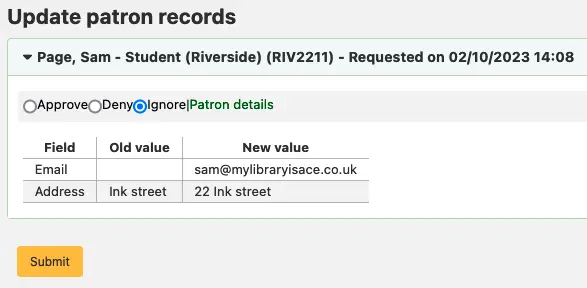
Hinweis
Sie können steuern, welche Felder Benutzer*innen über den OPAC sehen und ändern können, indem Sie die Einstellungen PatronSelfModificationBorrowerUnwantedField und PatronSelfModificationMandatoryField setzen.
PatronSelfModificationBorrowerUnwantedField
Asks: The following database columns will not appear on the patron self-modification screen: ___
Beschreibung:
Mit diesem Systemparameter können Sie festlegen, welche Felder Benutzer*innen bearbeiten können, wenn Sie ihnen mit der Einstellung OPACPatronDetails erlauben, ihre persönlichen Daten über den öffentlichen Katalog zu aktualisieren.
PatronSelfModificationMandatoryField
Asks: The following database columns must be filled in on the patron self-modification screen: ___
Beschreibung:
Mit diesem Systemparameter können Sie festlegen, welche Felder Benutzer*innen ausfüllen müssen, wenn Sie ihnen mit der Einstellung OPACPatronDetails erlauben, ihre persönlichen Daten über den öffentlichen Katalog zu aktualisieren.
PatronSelfRegistration
Fragt: ___ dass die Benutzer über den OPAC neue Bibliothekskonten registrieren können.
Voreingestellt: Nicht zulassen
Werte:
Zulassen
Nicht zulassen
Beschreibung:
Wenn Sie diese Einstellung auf „Zulassen“ setzen, wird im OPAC ein Link zur Registrierung eines neuen Kontos angezeigt. Mit den anderen Systemparametern der Selbstregistrierung können Sie steuern, wie diese Einstellung funktionieren soll.

Um benachrichtigt zu werden, wenn sich ein*e Benutzer*in über den OPAC registriert, verwenden Sie den Systemparameter EmailPatronRegistrations.
Bemerkung
Dieser Systemparameter erfordert, dass PatronSelfRegistrationDefaultCategory auf einen gültigen Benutzertyp gesetzt wird.
Wichtig
Benutzer*innen, die sich über den OPAC anmelden, müssen nicht von einem/einer Bibliothekar*in zugelassen werden. Aus diesem Grund wird empfohlen, dass Sie einen vorläufigen Benutzertyp ohne Ausleihrechte einrichten. Auf diese Weise müssen die Benutzer*innen in die Bibliothek kommen, um ihre Identität zu bestätigen, bevor sie Ausleihrechte in der Bibliothek erhalten. Sobald der/die Benutzer*in seine Identität bestätigt hat, kann das Bibliothekspersonal den Typ in einen Typ ändern, der die Ausleihe und das Vormerken von Medien erlaubt.
PatronSelfRegistrationAdditionalInstructions
Achtung
Dieser Systemparameter existiert nicht mehr ab Version 23.11. Er befindet sich jetzt unter HTML-Anpassungen.
Fragt: Zeige folgende zusätzliche Hinweise für Benutzer an, die über den OPAC ein neues Benutzerkonto eröffnen (HTML ist erlaubt):
Beschreibung:
Dieser Systemparameter übernimmt jeden HTML-Code, den Sie auf der Seite anzeigen möchten, die der/die Benutzer*in nach erfolgreicher Registrierung für seinen/ihren Bibliotheksausweis sieht.
PatronSelfRegistrationAgeRestriction
Version
This system preference was added to Koha in version 25.05.
Asks: Patron’s maximum age when registering: ___
Default: empty
Beschreibung:
This system preference allows libraries to limit the age of patrons self-registering on the OPAC. This avoids having errors in birth years, such as 1894 instead of 1984.
To enable the system preference, enter a numeric value, such as ‚100.‘
If the system preference is empty, there will be no age limit when self-registering on the OPAC.
PatronSelfRegistrationAlert
Version
This system preference was added to Koha in version 25.05.
Asks: ___ an alert on staff interface home page when there are patrons in the category defined by PatronSelfRegistrationDefaultCategory.
Werte:
Nicht zeigen
Zeige
Voreingestellt: Nicht zeigen
Beschreibung:
This system preference determines whether a message is displayed on the staff interface main page to alert staff members that a new patron registered on the OPAC. This is useful for libraries who need to check self-registered patron accounts and validate them.
PatronSelfRegistrationBorrowerMandatoryField
Fragt: Die folgenden Datenbankspalten müssen in der Eingabemaske für den Benutzer ausgefüllt werden: ___
Standard: surname|firstname
Beschreibung:
Mit diesem Systemparameter können Sie festlegen, welche Felder die Benutzer*innen in ihrem Selbstregistrierungsformular ausfüllen müssen. Wenn eines der erforderlichen Felder leer ist, lässt Koha den/die Benutzer*in sich nicht registrieren.
Wichtig
Trennen Sie Spalten mit |
Hinweis
For help with field names, ask your system administrator or view the database structure associated with the borrowers table.
Hinweis
Wenn Sie verlangen, dass Benutzer*innen ihre Konten per E-Mail mit der Einstellung PatronSelfRegistrationVerifyByEmail verifizieren, wird das E-Mail-Feld automatisch als erforderlich markiert.
PatronSelfRegistrationBorrowerUnwantedField
Fragt: Die folgenden Datenbankspalten werden nicht auf dem Bildschirm für die Selbstregistrierung der Benutzer angezeigt __
Beschreibung:
Mit dieser Einstellung können Sie Felder aus dem Benutzerregistrierungsformular im OPAC ausblenden.
Siehe auch:
PatronSelfRegistrationConfirmEmail
Asks: ___ patrons to confirm their email address by entering it twice.
Werte:
Nicht erforderlich
Erfordere
Standard: Nicht erforderlich
Beschreibung:
If this preference is set to ‚Require‘, patrons will have to enter their email address twice.
Stellen Sie sicher, dass Sie diesen Systemparameter aktivieren, wenn PatronSelfRegistrationVerifyByEmail aktiviert ist.
PatronSelfRegistrationDefaultCategory
Fragt: Verwende ___ als Benutzertyp für Benutzer, die ein Konto online eröffnen.
Werte:
Werte sind patron categories
Voreingestellt: Keine
Beschreibung:
Wählen Sie den Benutzertyp für den Typ, in den alle neuen, über den OPAC registrierten Benutzer*innen eingeordnet werden sollen.
Warnung
Verwenden Sie hierfür keinen regulären Benutzertyp, da jede*r Benutzer*in, welche*r die Verifizierung des Registrierungsprozesses nicht abgeschlossen hat, vom Skript cleanup_database.pl nach der in PatronSelfRegistrationExpireTemporaryAccountsDelay angegebenen Anzahl von Tagen gelöscht wird, einschließlich regulärer Benutzer*innen, die sich nicht online registriert haben.
Warnung
Benutzer*innen, die sich über den OPAC anmelden, müssen nicht von einem/einer Bibliothekar*in zugelassen werden. Aus diesem Grund wird empfohlen, dass Sie eine vorläufige Benutzerkategorie ohne Ausleihrechte einrichten. Auf diese Weise müssen die Benutzer*innen in die Bibliothek kommen, um ihre Identität zu bestätigen, bevor sie Ausleihrechte in der Bibliothek erhalten. Sobald der/die Benutzer*in seine Identität bestätigt hat, kann das Bibliothekspersonal die Kategorie in eine Kategorie ändern, die die Ausleihe und das Vormerken von Medien erlaubt.
Warnung
Wenn Sie dieses Feld leer lassen oder einen ungültigen Code eingeben, können sich Ihre Benutzer*innen trotzdem anmelden, erhalten aber keinen Benutzernamen. Auf der Seite werden keine Fehlermeldungen zur Erläuterung angezeigt. Achten Sie also darauf, dass Sie einen gültigen Code für den Benutzertyp eingeben.
Dieser Systemparameter ist für PatronSelfRegistration erforderlich.
PatronSelfRegistrationEmailMustBeUnique
Asks: ___ patron’s email (borrowers.email) as unique on self-registering. An email won’t be accepted if it already exists in the database.
Werte:
Nicht betrachten
Betrachte
Default: Nicht berücksichtigen
Beschreibung:
If „Consider“ is selected, this system preference will prevent the patron from creating several accounts with the same email address. An error message will appear at the top of the self-registration page.
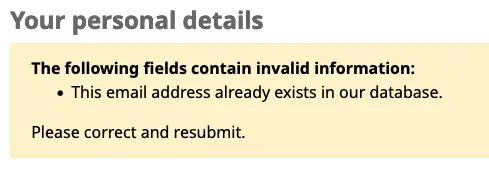
PatronSelfRegistrationExpireTemporaryAccountsDelay
Fragt: Löschen Benutzer, die sich noch in der Kategorie befinden, die durch PatronSelfRegistrationDefaultCategory angegeben ist, ___ Tage nach der Kontoerstellung.
Voreingestellt: 0
Beschreibung:
Dieser Systemparameter verweist auf den Cron-Job cleanup_database, der die Datenbank bereinigt. Wenn dieser Cron-Job so eingestellt ist, dass er nachts mit dem Parameter –del-exp-selfreg ausgeführt wird, bereinigt er alle Registrierungen, die nicht innerhalb der in dieser Einstellung angegebenen Anzahl von Tagen per E-Mail bestätigt wurden.
Dieser Systemparameter ist abhängig vom Systemparameter PatronSelfRegistrationVerifyByEmail.
PatronSelfRegistrationLibraryList
Asks: Enable the self-registration for these libraries: ___ (separate branchcode with |). If empty, self-registration is enabled for all libraries.
Beschreibung:
Wenn nur einige Bibliotheken in Ihrem System selbst registrierte Benutzer*innen akzeptieren, geben Sie hier die Liste der Codes ein und trennen Sie sie mit einer Pipe (|).
Wenn dieser Systemparameter leer ist werden alle Bibliotheken aufgelistet.
PatronSelfRegistrationPrefillForm
Asks: ___ password and login form after a patron has self-registered.
Standard: Anzeige und automatisches Ausfüllen
Werte:
Keine Anzeige und automatisches Ausfüllen
Anzeige und automatisches Ausfüllen
Beschreibung:
Dieser Systemparameter wird verwendet, um das Anmeldeformular im OPAC nach der Selbstregistrierung vorauszufüllen (oder nicht), so dass der/die Benutzer*in die Informationen nicht eintippen muss.
PatronSelfRegistrationVerifyByEmail
Fragt: ___ dass Benutzer, die online ein Konto eröffnen, sich über E-Mail verifizieren.
Standard: Nicht erforderlich
Werte:
Nicht erforderlich
Erfordere
Beschreibung:
Wenn Sie verlangen, dass die Benutzer*innen ihre Konten per E-Mail verifizieren, können sie sich erst dann am OPAC anmelden, wenn sie die von Koha gesendete E-Mail bestätigt haben. Wenn Sie dies nicht verlangen, können sich die Benutzer*innen anmelden, sobald sie das Anmeldeformular ausgefüllt haben. Sie können die Einstellung PatronSelfRegistrationExpireTemporaryAccountsDelay setzen, um die nicht verifizierten Selbstregistrierungen nach einer bestimmten Anzahl von Tagen zu löschen.
Hinweis
Wenn Sie verlangen, dass Benutzer*innen ihre Konten per E-Mail verifizieren, wird das E-Mail-Feld automatisch als erforderlich markiert.
Wichtig
Wenn Sie eine E-Mail-Bestätigung verlangen, setzen Sie auch PatronSelfRegistrationConfirmEmail auf „Erforderlich“, um zu verhindern, dass Benutzer*innen eine falsche E-Mail-Adresse eingeben und ihr Konto nie bestätigen können.
Virtuelles Bücherregal
OPACShelfBrowser
Voreingestellt: Zeige
Fragt: ___ einen Regal-Browser auf den Exemplardetailseiten, damit Benutzer sehen können, was sich in der Nähe des Exemplars im Regal befindet.
Werte:
Nicht zeigen
Zeige
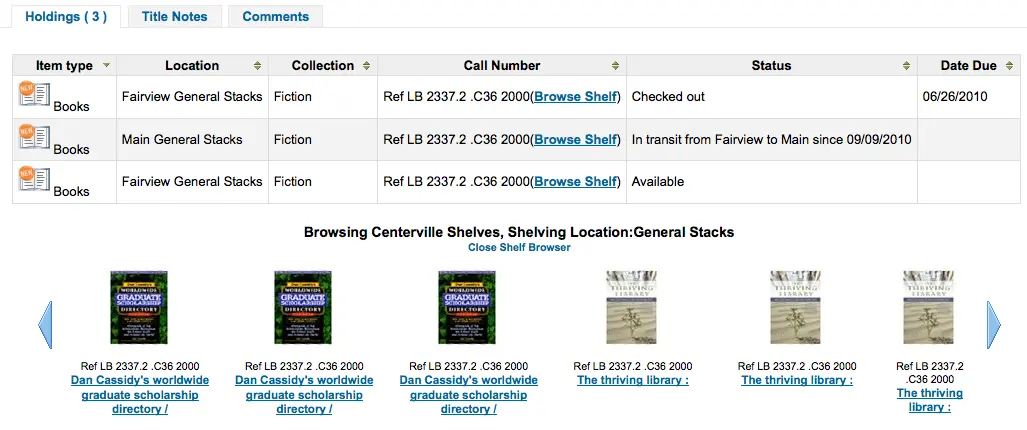
Beschreibung:
Mit diesem Systemparameter können Benutzer*innen sehen, was sich im Regal in der Nähe des von ihnen gesuchten Exemplars befindet. Die Option „Regal durchstöbern“ erscheint auf der Detailseite rechts neben der Signatur des jeweiligen Exemplars. Wenn Sie auf den Link „Regal durchstöbern“ klicken, können Sie über den OPAC virtuell im Regal blättern und sich andere Bücher anzeigen lassen, die mit ihrer Suche in Zusammenhang stehen, sowie Bücher, die sich in der Nähe des gesuchten Titels im Regal befinden.
Wichtig
Beachten Sie, dass dieses Feature relativ viele Ressourcen Ihres Servers verbraucht und bei großen Beständen deaktiviert werden sollte.
ShelfBrowserUsesCcode
Voreingestellt: Nicht benutzen
Fragt: ___ den Sammlungscode für die Anzeige im virtuellen Bücherregal.
Werte:
Verwende keine
Verwenden Sie
Beschreibung:
Wenn Ihre Bibliothek Sammlungscodes verwendet, möchten Sie vielleicht, dass der Regalbrowser berücksichtigt, zu welcher Sammlung die Bücher gehören, wenn er den virtuellen Regalbrowser auffüllt.
ShelfBrowserUsesHomeBranch
Standard: Nutzen
Fragt: ___ die Heimatbibliothek der Exemplare, bei der Anzeige von Titeln im virtuellen Bücherregal.
Werte:
Verwende keine
Verwenden Sie
Beschreibung:
Wenn Sie über ein System mit mehreren Bibliotheken verfügen, sollten Sie sicherstellen, dass Koha beim Befüllen des virtuellen Regalbrowsers berücksichtigt, welche Bibliothek die Bücher besitzt.
ShelfBrowserUsesLocation
Standard: Nutzen
Fragt: ___ den Standort für die Anzeige im virtuellen Bücherregal.
Werte:
Verwende keine
Verwenden Sie
Beschreibung:
Wenn Ihre Bibliothek Standorte verwendet, möchten Sie vielleicht, dass der Regalbrowser berücksichtigt, zu welchem Standort die Bücher gehören, wenn er den virtuellen Regalbrowser befüllt.
Anschaffungsvorschläge
AnonSuggestions
Fragt: ___ dass nicht angemeldete Benutzer Anschaffungsvorschläge machen.
Voreingestellt: Nicht zulassen
Werte:
Zulassen
Nicht zulassen
Beschreibung:
Dieser Systemparameter legt fest, ob Benutzer*innen, die nicht im OPAC eingeloggt sind, oder Personen, die keine Benutzer*innen der Bibliothek sind, Anschaffungsvorschläge machen können oder nicht.
Warnung
Bei der Einstellung „Zulassen“ werden die Vorschläge mit dem AnonymousPatron verbunden. Vergewissern Sie sich, dass der Systemparameter auf ein Benutzerkonto eingestellt ist.
MaxOpenSuggestions
Fragt: Beschränke Benutzer auf ___ offene Anschaffungsvorschläge.
Voreinstellung: Leer
Beschreibung:
Dieser Systemparameter wird verwendet, um zu begrenzen, wie viele Anschaffungsvorschläge die Benutzer*innen gleichzeitig offen haben können.
Leer lassen um keine Begrenzung festzulegen.
Bemerkung
Dieser Parameter hat keinen Einfluss auf anonyme Anschaffungsvorschläge.
Bemerkung
Dies betrifft nur Vorschläge, die „ausstehend“ sind. Sobald sich der Status des Vorschlags ändert, gilt er nicht mehr als „offen“.
Bemerkung
Diese Einstellung wirkt sich nur auf Vorschläge aus, die der/die Benutzer*in im OPAC macht. Sie verhindert nicht, dass Mitarbeiter*innen Vorschläge im Namen des/der BenutzerIn in der Dienstoberfläche machen.
MaxTotalSuggestions und NumberOfSuggestionDays
Fragt: Anzahl der insgesamt zulässigen Vorschläge ___ in ___ Tagen.
Voreinstellung: Leer
Beschreibung:
Dieser Systemparameter wird verwendet, um die Anzahl der Anschaffungsvorschläge zu begrenzen, die ein*e Benutzer*in innerhalb einer bestimmten Anzahl von Tagen machen kann.
Wenn Sie z. B. die Anzahl der Benutzer*innen auf 10 Vorschläge pro Woche beschränken möchten, geben Sie 10 und 7 ein.
Leer lassen um keine Begrenzung festzulegen.
OPACSuggestionAutoFill
Fragt: ___ OPAC-Vorschlagsformular wird automatisch mit Daten aus der Google Books API gefüllt.
Voreingestellt: Deaktiviere
Werte:
Deaktiviere
Aktivieren
Beschreibung:
Wenn dieser Systemparameter aktiviert ist, wird das Formular Anschaffungsvorschläge im OPAC neben dem ISBN-Feld eine Schaltfläche „Google Books durchsuchen“ haben. Wenn ein*e Benutzer*in eine gültige ISBN eingibt, prüft Koha die Google Books API auf Informationen wie Titel, Autor und Erscheinungsdatum und füllt automatisch das Vorschlagsformular für den/die Benutzer*in aus.
OpacSuggestionManagedBy
Fragt: ___ im OPAC den Namen der für die Verwaltung eines Vorschlags verantwortlichen Person.
Voreingestellt: Zeige
Werte:
Nicht zeigen
Zeige
Beschreibung:
Wenn Sie Benutzer*innen erlauben, Anschaffungsvorschläge zu machen, sehen diese den Reiter „Ihre Anschaffungsvorschläge“, wenn sie eingeloggt sind. Standardmäßig wird in diesem Reiter der Name des/der Mitarbeiter*in angezeigt, der/die den Anschaffungsvorschlag genehmigt oder abgelehnt hat. Diese Einstellung steuert, ob der/die Benutzer*in den Namen des/der Mitarbeiter*in sieht oder nicht.
OPACSuggestionMandatoryFields
Fragt: Felder, die für Anschaffungsvorschläge von Benutzern obligatorisch sein sollen: ___
Standard: Leer
Bemerkung
Das „Titel“-Feld ist immer verpflichtend.
Werte:
[Alle auswählen]
Verfasser
Reihe
Copyrightjahr
ISBN
Medientyp
Bibliothek
Hinweis
Begründung für Vorschlag
Erscheinungsort
Verlag
Menge
Titel
Beschreibung:
Mit diesem Systemparameter können Sie festlegen, welche Felder obligatorisch sind, wenn Benutzer Anschaffungsvorschläge aus dem OPAC machen.
OPACSuggestionUnwantedFields
Fragt: Felder, die für Anschaffungsvorschläge von Benutzern verborgen sein sollen: ___
Standard: Leer
Werte: Wie obenstehend für OPACSuggestionMandatoryFields.
Beschreibung:
Mit diesem Systemparameter können Sie Felder aus dem Formular Anschaffungsvorschlag im OPAC ausblenden.
Warnung
Machen Sie Felder in OPACSuggestionMandatoryFields nicht zu unerwünschten Feldern.
OPACViewOthersSuggestions
Fragt:___ Anschaffungsvorschläge anderer Benutzer im OPAC.
Voreingestellt: Nicht zeigen
Werte:
Nicht zeigen
Zeige
Beschreibung:
Dieser Systemparameter legt fest, ob Benutzer die Anschaffungsvorschläge anderer Benutzer sehen und durchsuchen können oder nicht.
Nur eingeloggte Benutzer können die Anschaffungsvorschläge anderer Benutzer sehen.
Warnung
Der Systemparameter opacuserlogin muss auf ‚Zulassen‘ gesetzt werden.
OPACVirtualCard und OPACVirtualCardBarcode
Version
Dieses Feature kam in Koha-Version 24.11 hinzu.
Asks: ___ patrons to access the ‚My virtual card‘ tab on their account page on the OPAC. If set to allow, show a ___ barcode in the patron’s virtual card.
OPACVirtualCard-Werte:
Nicht zulassen
Zulassen
OPACVirtualCard default: Allow
OPACVirtualCardBarcode values:
CODE128
CODE39
COOP 2 von 5
EAN-13
EAN-8
IATA 2 von 5
Industrial 2 von 5
ITF-14
Matrix 2 von 5
QR-Code
UPC-A
UPC-E
OPACVirtualCardBarcode default: CODE39
Beschreibung:
These two system preferences enable an electronic version of the patron’s library card barcode, which they can access when logged in to the OPAC.
This is helpful for patrons who need to scan their library card to use services but do not carry their physical card with them: they can now access their barcode by logging to their account on the OPAC from their mobile device. It will also be useful for library teams that do not issue physical cards to their patrons.
The OPACVirtualCard preference is the master switch for the feature, while OPACVirtualCardBarcode allows you to set the barcode format your library devices can read.
The barcode is generated from the patron’s cardnumber field and displayed in the OPAC in the ‚My virtual card‘ tab.
Anschaffungsvorschlag
Fragt: ___ dass Benutzer im OPAC Anschaffungsvorschläge machen können.
Voreingestellt: Aktiviere
Werte:
Deaktiviere
Aktivieren
Beschreibung:
Dieser Systemparameter ist der Hauptschalter für die Funktion Anschaffungsvorschläge.
Wenn aktiviert, muss opacuserlogin auf „Zulassen“ gesetzt werden, es sei denn AnonSuggestions ist auf „Zulassen“ gesetzt.
suggestionPatronCategoryExceptions
Fragt: Wenn Vorschlag aktiviert und AnonSuggestions deaktiviert ist, dürfen die folgenden Benutzerkategorien keine Anschaffungsvorschläge machen: ___
Voreinstellung: Leer
Werte: Ihre Benutzertypen
Beschreibung:
Dieser Systemparameter wird verwendet, um einige Benutzer davon abzuhalten, im OPAC einen Anschaffungsvorschlag zu machen.
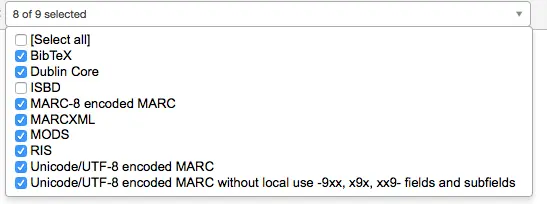
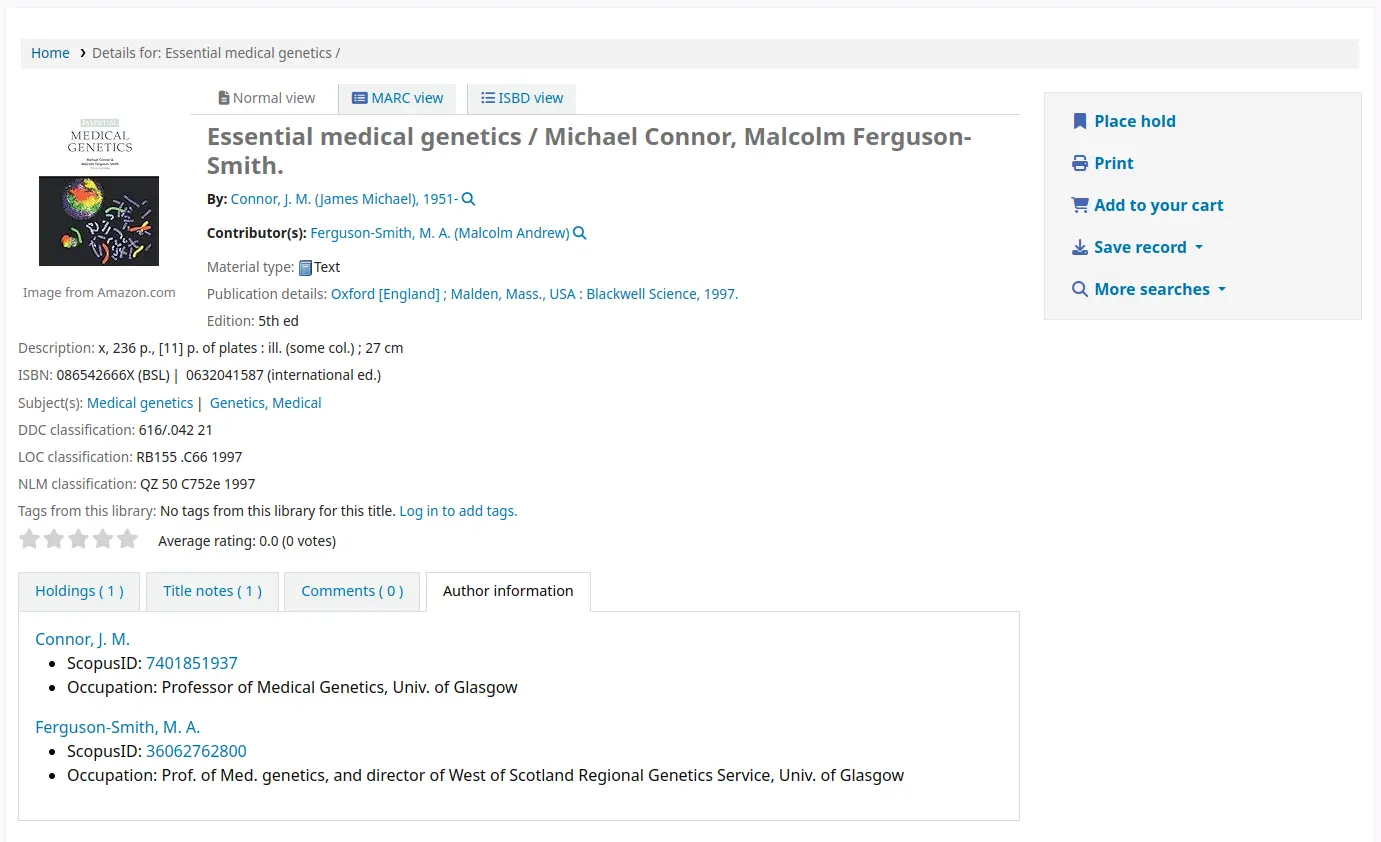

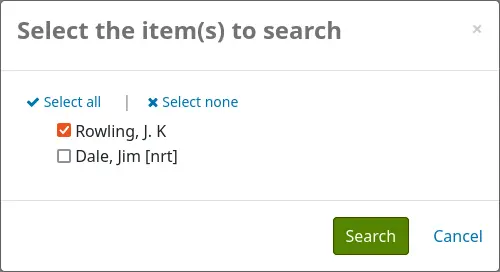
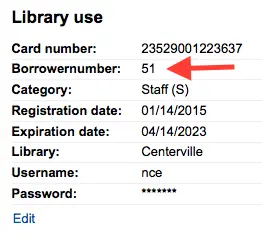
SocialNetworks
Fragt: Zeige ___ Links zu sozialen Netzwerken auf den Detailansichten des OPACs.
Voreingestellt: Keine
Optionen:
E-Mail
Facebook
LinkedIn
Beschreibung:
Mit diesem Systemprameter wird eine Reihe von Schaltflächen zum Teilen in sozialen Netzwerken unterhalb der rechten Spalte auf den Detailseiten der Datensätze im OPAC aktiviert.
Wichtig
Damit diese Schaltflächen beim Anklicken funktionieren, muss der Systemparameter OPACBaseURL korrekt ausgefüllt sein.